|
It is no secret that I love Riesling, especially German Riesling. So it is a touch ironic that my first trip to Germany brought me to the beautiful Franken wine region where Riesling only plays a minor role in production. Riesling is a late-harvest grape, and because Franken experiences typical continental weather with warm, dry summers and long cold winters, the risk of frost damage to the grapes is significant. The most favorable conditions for growing Riesling are moderately warm summers, adequate rainfall amounts during vegetation, and a long ripening period allowing the grapes to develop and retain their fruity acidity. My return trip to Germany was supposed to be an in-depth exploration of the Mosel wine region and its mouth-watering Rieslings. However, it was not to be, with travel put on hold for the past year, and then some. Not to be deterred, I recently had the pleasure of chatting virtually with four Mosel wine producers, sampled their expressive wines, and added their thoughts to my reviews. It was the next best thing to being there! Riesling is Germany’s most celebrated grape variety. With thirteen wine regions and over 102,000 hectares of vineyards, Germany boasts the world’s largest vineyard area of 23,000 hectares dedicated to Riesling! Riesling was first documented in 1435 in the Rheingau region and soon after that in Mosel. More than half of all the vineyard areas in the Mosel, Rheingau, and Mittelrhein are planted with Riesling. Riesling is a white aromatic grape capable of producing vastly diverse wines depending on the type of soil, altitude and microclimate. The wines range in style from bone-dry to succulently sweet and from table wines to high-quality collectibles. These wines are usually variety labeled and classified by ripeness and the level of sugar in the grape juice called “must weight”. There are two classification systems in Germany: the traditional system and modern VDP (Verband Deutscher Prädikatsweingüter) systems developed in the 21st century to reflect climate change. VDP is not part of the official German wine law. With the VDP system, the quality of the wine is based upon its origin (terroir). Its purpose is to highlight the value of the best vineyard sites in Germany. For this article, we will explore the traditional system. The traditional system has four quality categories: Deutscher Wein (a table wine category) small quantities are produced. Landwein A protected geographical indication. At least 85% of these grapes must originate in the region named on the label. It is typically dry or off-dry. Qualitätswein (QbA) A protected designation of origin and accounts for the majority of German wines. 100% of the grapes must originate from one district inside the 13 wine regions. Prädikatswein In addition to the same rules that apply to the Qualitätswein category, the Prädikatswein category indicates a superior quality wine with strict requirements. Within the traditional system, Riesling is also divided into levels of ripeness that the grapes have achieved by the time they are harvested. These levels are: Kabinett Light dry to off-dry, low alcohol. Grapes are harvested during the regular season. Spätlese Late harvest wines. More intense in flavor and concentration Auslese Noble wines are usually but not always sweet. It is made from hand-selected bunches of very ripe grapes and can only be made in the best years with enough warm weather. Beerenauslese made from overripe grapes usually infected with noble rot. Each berry is hand-picked. It is known for rich and sweet dessert wines. Trockenbeerenauslese These are rich, sweet, honey-like wines. Grapes are overripe, shriveled, hand-selected, and usually infected with noble rot. Eiswein made from overripe grapes that have frozen on the vine. Grapes are harvested only under exact weather conditions and pressed while frozen. Mosel Mosel wine region is a cool-climate region and the most famous of the 13 wine regions in Germany. It is renowned for its terraced vineyards and age-worthy Rieslings. Mosel has one of the coolest climates of the major German wine regions. The vineyards here enjoy a continental climate with warm summers and long growing seasons, contributing to the grapes ripening and help create heightened flavors and low alcohol levels. Mosel expands over 8,800 hectares with the beautiful Mosel River snaking its way through the region. Many of the vineyards are located alongside the river and are among the steepest in Germany and the world! With half averaging a slope of over 30 degrees and reaching inclines of 60 to 70 degrees, it is quite breathtaking! The Bremmer Calmont, which is the steepest vineyard in Europe, is located here. Needless to say, tending the vineyards is labor-intensive and can be dangerous. Mosel is referred to in three sections: Upper Mosel, Middle (Mittelmosel) Mosel, and Lower Mosel, with most of the vineyards located in Middle Mosel. Within these three sections are six areas with approximately 5,446 hectares of Riesling planted. Red and blue slate dominate the soil here, with greywacke, sandy, gravelly, and shell-limestone found throughout the six areas. Without further ado, let me introduce (in no particular order) four remarkable wine producers in Mosel. Weingut Fritz Haag Fritz Haag is a small family estate established in 1605 and located in the heart of Middle Mosel in the village of Brauneberg. One of several Mosel legends, the winery is noted for its Rieslings’ extreme purity and mineral intensity. Wilheim Haag, who guided the estate to a world-renowned reputation and was the first to be the recipient of the “Winemaker of The Year” award in 1994, sadly passed away in 2020. His son Oliver, the 12th generation, took over the reins for his father in 2005 and is now the estate owner. Fritz Haag has 24 hectares of vineyards (all exclusively planted to Riesling) that include the world-renowned vineyards “Brauneberger Juffer Sonnenuhr” and “Brauneberg Juffer.” The combination of the deep slate soils and superb micro-climate of both vineyards make up the foundation for some of the most elegant and intensely flavored Riesling wines of the Mosel region. Many of the vineyards are 25-30 years old, with some parcels, especially in the heart of the Brauneberger Juffer-Sonnenuhr, are over 50-80 years old. In addition to his formal school training to become a winemaker, Oliver worked at many estates throughout Germany, South Africa, and Madeira, Portugal, before returning to his family estate. “I learned a lot. But most of my education is from drinking wine, learning, and drinking!” Tell me about your family estate. Oliver: We are a family estate that produces wines from our vineyards. It is essential for us to know where our grapes come from and focus on making high-quality wines. We invest our time in producing wines that have a long potential life. How has climate change impacted your vineyards? Oliver: It is getting warmer and drier, with extreme weather patterns. Rain comes in shorter periods with more intense storms. We must pay attention, take care of erosion, and make sure the vines get enough water during dry spells. We must pick the grapes at the right time, ripe but not overripe, only healthy grapes. Most importantly, we must select, select, select! And we have to be more effective in the winery. What is your take on the 2020 vintage? Oliver: Considering the extreme weather with a warm and dry summer, 2020 was uncomplicated, not stressful, and the harvest was slow. We needed to make sure that the grapes didn’t get sunburn, but in general, the grapes were very healthy. For the drier wines, we picked a little earlier to get the acidity and freshness. 2020 is a classic vintage with a lot of finesse and elegance in the wines, not as much acidity, but smoother and rounder. Do you have a favorite style of Riesling? Oliver: No, it all depends on my mood! Riesling is so interesting, and the different faces are so nice. The many styles offer a wonderful palate of different fruits, very classic wines! Fritz Haag Estate Riesling 2019 The grapes are harvested from steep slate-soil vineyards and made in an off-dry style. It is light and refreshing with notes of peach, citrus, minerality, and hints of floral. Oliver says, “Not really dry, not really sweet…it’s in the middle. A tri-style wine with wonderful fruit, refreshing, with lively and crisp acidity. It is easy drinking.” Alcohol: 11% SRP: $20 Fritz Haag Brauneberger Juffer Riesling Kabinett 2019 The grapes are harvested early from the dramatic steep Brauneberg hillside vineyard. This Riesling is delicious and lively with notes of floral, lemon, peach, and racy acidity. Oliver says, “This is our business card. It is very fine. A wonderful balance of sweetness, acidity, and freshness. Great aging potential of up to 30 years, but fun to drink now.” Alcohol: 8.5% SRP: $26 Weingut Maximin Grünhaus Maximin Grünhaus is a legendary and historic estate located in the Ruwer region of Mosel. The estate dates back to Roman times, with evidence of winemaking even then. Until the end of the 18th century, it was managed by the Abbey of Saint Maximin. Today, it is managed by the sixth generation, Maximin von Schubert, who told me that he has been working in the vineyards since he was six years old. The estate has 77 acres of vineyards, of which Riesling occupies 91%. The estate lies at the foot of a long and steep south-facing slope on the bank of the tiny Ruwer river. This river is located about 2 kilometers (1.25 miles) from the Mosel River, where they join. The land is divided into three vineyards, each with a distinct terroir that reflects the unique character of the wines produced here. Bruderberg is the smallest of three vineyards and once upon a time provided wine for the monks. These wines tend to be very spicy with a rustic slate-mineral quality. The Herrenberg vineyard was once used to make special wines for the Abbey’s choirmasters. It sits on 40 acres and benefits from deep soils, good water retention, and a base of red Devonian slate. The Abtsberg vineyard is the estate’s finest site. It covers 35 acres, of which parts have been planted with vines of over 1,000 years. Wines from this vineyard were served at the table of the Abbot (Abt). The slope of the vineyard reaches a 70% gradient with a subsoil of blue Devonian slate. These wines are finely structured with subtle minerality, generous fruit, racy acidity, but delicate. They are considered one of the longest-lived Rieslings of the region. I asked Maximin for his take on climate change. Maximin: There are many impacts. We have weeks of dryness in the late summer and then heavy rain. The warmer, wetter climate brings new diseases, taking probably 1% of the vines each year. Harvest is about three weeks earlier than compared to my childhood. With warmer harvests, the challenge is in keeping grapes healthy until the end of harvest. Maximin’s thoughts on the 2020 vintage. Maximin: It was a beautiful spring, with very few workers due to Covid. We had a dry summer, but otherwise perfect. Harvest began with a beautiful Pinot and Sekt harvest, then lots of rain for 12 days, but a beautiful three-week finish to the season. I love Maximin’s answer to my question about his favorite style of Riesling. Maximin: I would prefer, ‘What Rieslings don’t you like?’, that would be easier to answer! I love Riesling when it’s multi-layered, acidity-driven, elegant, fine, clear, and fresh. I love Riesling when it’s dry or off-dry, or when it’s sweet or noble sweet, paired with tension and acidity. Maximin Grünhaus Monopol 2019 The grapes for this wine are sourced from younger vines in both the Herrenberg and Abtsberg vineyards. The 2019 vintage brought meager yields due to a severe May frost, losing 50% of the harvest. What remained became a beautiful, fresh and pure Riesling. It is mineral-driven and crisp with notes of melon, white stone fruit, and a touch of herbs. Maximin says, “This is the entrance gate to Maximin Grünhaus dry Rieslings. It will be called Schloss Riesling from 2020 on. It is pure Riesling joy, elegant, spicy, racy, and that’s only the entry-level.” Alcohol: 12% SRP: $22 Maximin Grünhaus Herrenberg Kabinett 2019 Grapes for this wine are sourced from the Herrenberg vineyard. As noted with the previous wine, 50% of the harvest was lost due to a devastating May frost. The wine presents with delicate and juicy notes of peach, soft lemon, apricot, and spice. Very fresh, clean, and a perfect balance of minerality and acidity. Maximin says, “Dancingly elegant, pure deep slaty style, with the typical herbal, spicy character, perfect acidity. Food pairing won’t be possible because you will finish the bottle before eating!” Alcohol: 7.5% SRP: $34 Maximin Grünhaus Abtsberg Riesling GG 2018 Grapes are harvested from the Abtsberg vineyard from vines that average 40-year-old. The soil here is predominately blue slate. Due to its steep slopes and south-facing exposure, it is the warmest site at Grünhaus. GG stands for Grosses Gewächs, the German term for a dry wine from a Grosse Lage (grand cru) vineyard. This is a beautifully structured wine. Notes of apple, apricot, peach, minerality, lemon custard, and vibrant acidity dance around the palate. This wine will age well. Maximin says, “An Abtsberg classic of this hot summer of 2018. Even though it has been hot, we can still keep this elegance and salty mineral clearness with a structure influenced by the warm year. Superb dry wine.” Alcohol: 13% SRP: $70 Dr. Loosen The Dr. Loosen estate has been in the same family for over 200 years. Ernst (Erni) Loosen, owner and 5th generation, is considered one of the most iconic and influential Riesling producers in the world today. Since taking ownership in 1988, the estate has grown substantially. With vines that are up to 140 years old in his top sites, Erni has transformed the vineyards by restricting crop size, prohibiting chemical fertilization, demanding strict fruit selection and gentle cellar practices. Erni studied winemaking and viticulture at the University of Geisenheim and archeology at the University of Mainz. The Dr. Loosen estate is located in the village of Bernkastel in the heart of the Mosel Valley. All of the estate’s ten major vineyards are designated as Grosse Lage (grand cru). The prevalent soil types here are blue slate, red slate, and red volcanic sandstone. Erni has used climate change to his advantage. Erni: Due to climate change, we’ve seen an average of higher ripeness of 1 to 1.5 potential alcohol sugar ripeness compared to an average sugar ripeness of 9 to 10 potential alcohol 30 years ago. That makes a total nowadays of 10.5 – 12 potential alcohol sugar ripeness, which is still low compared to wines in the New World or South of Europe. We are quite happy that we have a little more ripeness, giving us a great chance to make excellent dry wines with not too high alcohol. Do you prefer a particular style of Riesling? Erni: I love the dry GG (Grand Cru vineyard) wines produced 12 to 24 months in the barrel on the full yeast without batonnage. I love these traditional fruity style Riesling Kabinett wines – especially with some age of 10 to 15 years. Would you like to share a thought or story? Erni: “A great wine begins in your head.” What I mean by this is that if you do not go out and try what the great producers of the world are doing, then you may not know what great is. You first need to experience what great is, and then you can formulate in your head where you stand and where you need to be. For me, great wines need to be able to age, and to achieve this goal; I need to plan in advance how to get there; what needs to be done in the vineyard, when to harvest, what fermentation method, how long, and in what type of vessel to age the wine and the list goes on. Without a vision and experience, I think it is nearly impossible to make great wine. Dr. Loosen Wehlener Sonnenuhr Riesling Kabinett 2019 Grapes for this wine are sourced from the famous “sundial” vineyard in the village of Wehlen. The classic blue slate soil gives the wines a delicate, crisp acidity. The wine is fresh, aromatic, and light with white stone fruit, lemon, and minerality. It is a perfect off-dry Riesling with a nice balance of salinity on the finish. Erni says, “What the Ürziger Würzgarten is to Spätlese, the Wehlener Sonnenuhr is to Kabinett. This is the prototypical Mosel Kabinett. This vineyard has breath-taking slopes and stunning blue slate soil. It is a perfect welcome drink.” Alcohol: 8.5% SRP: $28 Dr. Loosen Ürziger Würzgarten Riesling Spätlese 2019 This is a late harvest wine with a few extra weeks of hang time. Grapes are harvested from the incredibly steep Ürziger Würzgarten vineyard with volcanic sandstone soil. It is called the “spice garden” vineyard because it produces wines with exotic, spicy aromas and tropical fruit flavors. Up to 130-year-old vines can be found here. This wine is sumptuous, juicy, and bursting with crisp acidity. Erni says, “Truly a desert island Spätlese if I had to choose one vineyard for this style of wine to be stranded with. It is tropical, spicy, layered, and complex, with beautiful sweetness balanced by an elegant finish. If there were Thai food on the desert island, this would be a perfect pairing. Drink this wine young for enjoyable primary fruit flavors and aromas, or lay it down for 20 years for an amazing experience!” Alcohol: 8% SRP: $34 Dr. Loosen Erdener Treppchen GG 2018 Due to the iron-infused, red slate soil in the Erdener Treppchen vineyard, these wines are muscular and complex, with an intense mineral finish. According to Dr. Loosen, the vineyard is so steep that a long time ago, stone steps were built into the hillside to help workers reach the vines. This wine is kept on the full lees for one year before bottling, allowing for greater texture. Although this is a dry wine, the juiciness of Riesling comes through, delivering peach, citrus, green apple, and lots of minerality and crisp acidity. Erni says, “Old vines, steep slopes, red slate soil combined with winemaking techniques from over 100 years ago help make this wine truly unique; racy and mineral, but still balanced with a juiciness that makes you want to have another glass.” Alcohol: 12.5% SRP: $54 Weingut Zilliken Weingut Zilliken is a highly regarded family-owned and run estate that dates back to 1742. Located in the Saar Valley, Zilliken is known for its premium quality Rieslings. After a 1944 bombing raid that destroyed the estate and cellar, Marianne Geltz, the owner, with tenacious energy, continued the family wine-growing tradition. She married Fred Zilliken in 1947, and from that point on, the estate was referred to as Forstmeister Geltz-Zilliken. The Zilliken cellar is the deepest in the Saar Valley, extending three stories below ground! The depth creates ideal natural conditions of 100% humidity and a constant temperature around 52 degrees. Their vineyards, of which two are Grosse Lage, are devoted to 100% Riesling. They make Estate, Village, and Grosse Lage wines. Winemaker and owner Dorothee Zilliken is the 11th generation. She studied viticulture and oenology at the University of Applied Science in Geisenheim and worked at some well-known estates in Germany, France, and South Africa. She and her husband, Hanno, work together with her parents, benefiting from their experience. Dorothee talks about the impact of climate change. Dorothee: One of the big topics of the future of the vineyards is the availability of water needed at the right time. Since the vintage 2003, we are covering all our vineyards with mulch – as a natural fertilizer, so all the rain = falling during the year is captured in the soil. The big advantage for the vines is to have enough water to find all the [nutrients] with their roots and to be able to build up some acidity. What is your take on the 2020 harvest season? Dorothee: I really love the 2020 vintage because it is again a very classical Saar-vintage with all its inimitable elegance and finesse. Like usual, the harvest season is the time of the year to be so tired because you have to work so hard and also physically so hard, but it is also the time of the year when you are full of motivation because day-by-day you see and taste what it is all for. A great feeling you can’t describe. I have asked everyone what their favorite style of Riesling is. And, you? Dorothee: My favorite style of Riesling is showing me all the advantages of a perfect white wine: expressive but with finesse, elegance, and filigree; long-lasting but weightless; fresh and deep, mineral, focused, loving the playful youth and the deep, rich (sometimes smoky) age. Animating, so you are looking forward to the next glass… Zilliken Rausch Kabinett Riesling 2019
The grapes for this wine are harvested from the Rausch vineyard, a Grosse Lage site. It is known for its gray slate and greenish volcanic rock, which keeps the soil well-drained and adds a focused mineral edge to the wines. Wines from this vineyard can age well for decades. This Kabinett is characterized by a delicate palate of floral, honeydew melon, peach, herbs, minerality, and vibrant acidity. It is elegant. Dorothee says,“It’s like eating a big bowl of fruit salad with a lot of melons in it. So juicy and fruity that it makes your mouth water. Besides all this fruitiness, there is elegance, finesse, and only 8.5% alcohol, so you really can ENJOY the bottle now or in the next 20 years.” Alcohol: 8.5% SRP: $44 Zilliken Rausch Spätlese Riesling 2019 This is another outstanding wine from the Rausch vineyard. It is a stunning late-harvest wine with juicy layers of citrus, tropical fruit, and white stone fruit that fuse with minerality and crisp acidity. A refreshing finish with a hint of lemon zest begs for another sip! Dorothee says, “It shows a lot of tropical fruits like mango, passion fruit, and a hint of pineapple. Very animated. It’s great in combination with cheese, as an aperitif, or in combination with hot and spicy cuisine. Enjoy now and the next 25 years.” Alcohol: 8% SRP: $64 I’ll end this article with some shared thoughts from Dorothee. Dorothee: For me, there are not many professions in the world that are so sensual. You can see every year what your soil and your vineyards can achieve. You can accompany the growth of the vines, the leaves, and the berries. You can harvest them at the right time and enjoy this climax of the vegetation period, given as a present by nature! It is knowing how to work with some tools of the trade that my grandfather used to work with (for example, our oak barrels). It is the ability to benefit from my family’s great experiences and be allowed to think about the future. I can take the strength of nature and family for nature and family and take in every breath and sip of these Rieslings… Until next time… Cheers! Penina This story was originally published on Santé Magazine. To leave a comment or if you have an inquiry, please contact me at [email protected] While the bars and restaurants are slowly returning to normalcy, many would still prefer to do their socializing at home. And Nickel Dime Syrups has made it easier than ever to create fun cocktails just like the professionals. Professional bartender Jared Hirsch and entrepreneur Absinthia Vermut have put together a line of small-batch custom cocktail syrups made from all-natural ingredients. Based in Oakland, California, Hirsch is a staff mixologist at the Sidebar Restaurant and is famous for his cult cocktail, award-winning “Caged Heat.” The cocktail became so popular he couldn’t produce enough syrup in the restaurant’s kitchen to meet the high demand. That’s when he consulted Absinthia on how he might increase the production and still maintain its quality. From these discussions, Nickel Dime Syrups was founded. Hirsch said, “There’s tremendous demand and curiosity about craft cocktailing at home. Consumers in the US have a pent-up thirst for the kind of bold, complex cocktails their favorite bartender used to make for them. But that doesn’t mean they are willing to settle for artificial flavors or one-note mixes. Nickel Dime Syrups provide a custom cocktail experience with each pour. Your home bar will be the hottest spot in town!” The syrups are made in California and are alcohol-free, gluten-free, and approximately 100 calories per 2 oz. serving. Their portfolio includes four unique syrups with a signature cocktail recipe on each bottle. Grab your favorite spirit and enjoy these cocktails. Caged Heat Cocktail Syrup (Syrup ingredients: tamarind, cardamom & ghost pepper) Caged Heat 2 oz. Bourbon 1 oz. Caged Heat cocktail syrup 1 oz. fresh lemon juice Shake all ingredients in a cocktail shaker, strain into your favorite cocktail glass. Fairy Dust Cocktail Syrup (Syrup ingredients: fennel, anise & wormwood) Fairy Dust 2 oz. gin 1 oz. Fairy Dust cocktail syrup 1 oz. fresh lemon juice Shake all ingredients in a cocktail shaker, strain into your favorite cocktail glass, and top with Peychaud’s bitters (optional). Cherry Bomb Cocktail Syrup (Syrup ingredients: cherry, coffee & cacao) Cherry Bomb 2 oz. Dark Rum 1 oz. Cherry Bomb cocktail syrup 1 oz. fresh lime juice Shake all ingredients in a cocktail shaker, strain into your favorite cocktail glass. Crimson Smoke Cocktail Syrup (Syrup ingredients: smoked tea, cranberry & honey)
Crimson Smoke 2 oz. Mezcal 1 oz. Crimson Smoke cocktail syrup 1 oz. fresh lime juice Shake all ingredients in a cocktail shaker, strain into your favorite cocktail glass. Nickel Dime Syrups are available nationwide. SRP: $19.99 for 15 oz. bottles SRP: $29.99 for a mini sample pack of all four varieties. Until next time… Cheers! Penina To leave a comment or if you have an inquiry, please contact me at [email protected] This story was originally published on Santé Magazine. According to the Gospel of John, Jesus transformed water into wine at the Wedding at Cana, making this his first miracle. At Viv & Oak, wine is being transformed into a cannabis-infused beverage. Will wonders never cease? For many adults, drinking alcoholic beverages is not an option. A myriad of nonalcoholic drinks has graced the market to fill this gap, such as distilled botanicals, and nonalcoholic beer and spirits. But do they enhance the social experience? While everyone else might be enjoying a pleasant buzz from alcohol, nonalcoholic drinkers may feel left out of the loop. In 2016, Alana Burstein, founder and president of Viv & Oak, sought a solution to this problem, driven by her own experience with alcohol. The result of her research and dedication to finding a healthier and safer alternative emerged in 2019 with a Cannabis-infused beverage. As Alana attests, “This beverage allows for an elevated social experience, without the negative impacts of alcohol.” Viv & Oak’s cannabis-infused beverages are made with premium California grapes that are hand-picked and then gently crushed and fermented in oak. Once a 14% alcohol level is reached, the alcohol is extracted using GoLo Technology to remove 100% of the alcohol without losing aroma or flavor. After the alcohol is removed, premium cannabis oil is blended in. Cannabis is a plant with a multitude of ingredients, including CBD (cannabidiol) and THC (tetrahydrocannabinol), two prominent and natural compounds. Although they have the same chemical makeup, they each have a different effect on the body. THC is the primary psychoactive component that produces a “euphoric” sensation. In comparison, CBD is more subtle and frequently used as a therapy to ease discomfort and stimulate appetite. Together, the CBD balances the THC and reduces some of its psychoactive effects, such as feeling high. At present, Viv & Oak has a selection of five beverages, each containing different profiles of CBD and THC levels. Below is a chart showing the different levels for each bottle. As you can see, each five-ounce glass of Viv & Oak contains 16-24 calories and 3-4 grams of sugar, a much healthier alternative to alcohol! On a recent phone call with Alana, I asked her how she arrived at the recommended dosage. Alana: Because this is such a new product and not everyone feels the same on a certain milligram amount, much like alcohol, I wanted to have the appropriate dosage for the new consumer. Depending on your preference, our Shimmering Blush 1:1 has an equal amount of THC and CBD, giving you that elevated feeling but less of a body high; together, it creates the perfect balance. Our CBD without the THC would also be an excellent start. Our THC 50mg is great for the more experienced user, giving them 10mg of THC per 5oz pour. The best part is that you will start to feel the effects in 10-15 minutes, avoiding overconsumption. What would you advise when one is tasting your beverage for the first time? Alana: Go slow and wait for the effects to set in before having your next glass. You refer to Viv & Oak as Cannabis-infused Wine. However, the bottle clearly states “beverage,” and the word “wine” is omitted from your website. Alana: Since we were one of the first cannabis wines on the market, the regulations prohibited any alcohol-related words. Words such as wine, sparkling, and alcohol on our wine label and our website could not be affiliated with cannabis and alcohol together, so we played it safe and called it a beverage. How has the market changed since last year? Do you have more competition, and if so, what sets you apart? Alana: Since last year, when COVID-19 hit, we had seven events booked, and they were all canceled. Distribution has not been an easy pursuit either, lacking processes in place. Thankfully we can finally see the light at the end of the tunnel and are excited to be back on track. Another cannabis-wine brand is on the market, and I expect lots more coming. What sets us apart is having a personal story about why I created Viv & Oak, our different dosing styles, taste, design, price point, and our valued customers. What do you envision for the future of your company? Where do you hope to sell your product? And, in what states is this product currently available? Alana: Concerning the future of Viv & Oak, we are starting production for our single serves this summer, and we are working on partnerships in other states. We envision cannabis becoming legal federally and being a game-changer once it happens. We hope to have Viv & Oak available in restaurants, bars, and grocery stores. Our ideal future sounds like this, “Do you want a traditional wine with alcohol or a glass of Viv & Oak, cannabis-infused wine?” We are currently available in dispensaries all over California. To find a dispensary carrying Viv & Oak near you, visit https://vivandoak.com/ I had the opportunity to sample two cannabis-infused beverages, each containing 50mg of THC/10mg per serving. Shimmering Blush THC 50mg 10mg per five-ounce serving with 4 grams of sugar and 24 calories Sparkling rosé. Shimmering Scarlett THC 50mg 10mg per five-ounce serving with 4 grams of sugar and 16 calories. Each beverage is slightly effervescent, adding to the festivity of the experience. These are not complex beverages, and although they are made from wine, the taste profile leans more toward a sparkling fruit drink. Viv & Oak may not be “wine” as we know it, but the benefits of this beverage are numerous. The ability to attain an “elevated social experience” without drinking alcohol or inhaling cannabis just might become the new norm! After trying Viv & Oak, I was pleasantly relaxed, with a feeling of well-being, a gentle high, and no “alcohol fuzziness.” It took about 12 minutes for me to start feeling the effects. And the beauty of it was that I could control my “euphoria” just by continuing to take a few sips and then wait for the cannabis to do its magic! Who would have thought that after consuming cannabis in its various forms throughout my life, I would be drinking it from a wine glass! Alana recommends that you sip and swish slowly for a faster onset time. Please note: Although most individuals will have a quick response, not everyone does. The back of the bottle states, “The intoxicating effects of cannabis products may be delayed up to two hours.” Please be mindful when trying this product for the first time. Having the “munchies” has always been associated with consuming cannabis, and one might gravitate toward traditional junk food. However, if you want to elevate your experience while sipping Viv & Oak, pair it with these palate-pleasing foods. Try a charcuterie board, grilled salmon or chicken, or one of my favorites, a simple pasta dish made with sautéed zucchini, red pepper, lemon, and herbs, topped with grated Parmesan and extra virgin olive oil. Of course, decadent desserts are always welcome. A favorite of mine is Oat Milk Chocolate pudding! Cannabis might not be for everyone, but Viv & Oak beverages are an excellent alternative to alcohol and a delightful way to partake in the social experience.
Until next time… Cheers! Penina This story was originally published on Santé Magazine. To leave a comment or if you have an inquiry, please contact me at [email protected] Many of us are longing to travel again. I know that I certainly am! I miss the excitement of exploring new places, tasting local cuisine, and sipping wine while walking through the vineyards. For the past year, and then some, we have all had to abide by “stay at home” orders and limited travel excursions. During the pandemic, I have been fortunate to be part of many Zoom tastings from around the world. I’ve met with winery owners and winemakers to taste their products from the comfort of my living room. Of course, it doesn’t compare to physically traveling, but it does allow my palate to be transported out of my home. I’ve been able to virtually experience the climate, soil, and history that awaits me in each glass of wine. Recently my palate took a trip to southern Italy, often referred to as the Mezzogiorno (Midday region) due to the intense sunshine at midday. Southern Italy is located in the lower part of the Italian “boot,” where some of Italy’s oldest and most important historical towns are located. The Adriatic Sea borders it on the east coast, the Tyrrhenian Sea on the west or Mediterranean coast, and the Ionian Sea to the south. Southern Italy is noted for its expression of quality wines produced throughout its wine-growing regions of Molise, Campania, Basilicata, Puglia, Calabria, Sicily, and Sardinia. Recently, an Italian wine magazine, Cronache di Gusto launched a wine competition called Sud Top Wine, dedicated to awarding southern Italian wines produced in Sicily, Puglia, Basilicata, Campania, and Sardinia. I received three of these awarded wines, two from Sardinia and one from Sicily. Quartomoro di Sardegna Vermentino di Sardegna DOC VRM 2016 Piero Cella, winemaker, and owner for Quartomoro, initially used the winery, which he bought in 2009, to experiment and test ideas to learn more about his grapes and wine. This lab eventually evolved into what it is today, “a workshop of ideas” where new wines are created. Piero has over 30 years of experience as a winemaker. This wine is 100% Vermentino sourced from the Marrubiu vineyards, where vines were planted in 1978. The wine spends two years in steel, of which 5% is in oak tonneaux. “This semi-aromatic white grape was introduced in Sardinia 150 years ago from the Iberian Peninsula via Corsica. In Sardinian, it is called ‘Axina de mesa’ or ‘Axina bionda’. The production of Vermentino has steadily increased since the 1960s, especially in Gallura (thanks to the DOCG appellation), becoming the most important Sardinian white grape variety.” Quartomoro The color of this wine is lemon yellow with vibrant aromas of floral, white stone fruit, spice, and citrus. The aromas segue onto the palate with a tapestry of minerality and a touch of floral. Nutty notes and lemon zest linger on the finish. Enjoy as an aperitif or with seafood, grilled chicken, and spicy Asian cuisine. Alcohol: 13.5% SRP: $30 Giuseppe Sedilesu Cannonau di Sardegna DOC Riserva Ballu Tunda 2015 Giuseppe Sedilesu is a family-owned and operated winery. It is internationally known for its production of Cannonau. Giuseppe founded the winery over 35 years ago, beginning with one hectare of vineyards. It has expanded over 12 times since then. Cannonau is a member of the Grenache family, but whether it is indigenous to Sardinia is debatable, especially among Sardinians! This wine is 100% Cannonau and made with organic grapes. Fermentation takes place spontaneously for 30-45 days in barrique at controlled temperatures. The wine is then aged in bottle for nine months before being released on the market. This wine is ruby red with aromas of red fruit and spice. The palate offers lush notes of raspberry, plum, sour cherry, herbs, spice, and balsamic notes with a hint of tobacco on the finish. It is beautifully balanced between sweet and savory. Serve with grilled meat, chicken, seared tuna, and aged cheese. Alcohol: 15% SRP: $45-$50 Cantine Pellegrino Pantelleria DOC Bianco Isesi 2018 Cantine Pellegrino was founded in 1880 and is based in Marsala. It is a family-owned and run winery that is now in its sixth generation. They have vineyards in four territories of Sicily, one of which is Pantelleria Island. Zibibbo (Muscat of Alexandria) is an indigenous white grape of Sicily and is primarily grown on Pantelleria Island. Zibibbo is made in both a sweet and dry wine. The grapes for this 100% Zibibbo wine are hand-harvested and aged for 12 months on lees in steel tanks. This is a dry and refreshing wine with a pale yellow color. The aroma is heavenly with honeysuckle and jasmine floral notes, white stone fruit, tropical fruit, and a hint of herbs. The palate offers white peach, apricots, herbs, mineral notes, and a touch of sapidity. Serve as an aperitif or with fish, light pasta, or appetizers.
Until we can all travel again, which I hope is very soon, let’s pour a glass of wine and let our palate do the traveling. Until next time… Cheers! Penina To leave a comment or if you have an inquiry, please contact me at [email protected] Cava and chocolate truffles, why not? There is no lack of wine samples and other goodies that arrive at my doorstep daily. But when I received a sampling of Cava Sparkling wines in very festive bottles, I just had to pair them with a sample box of chocolate truffles. Vilarnau is a small, handcrafted cava house. It is located just outside of Barcelona in Spain’s Catalonia region, where high-quality cavas are produced. The Vilarnau family settled here in the 12th century, with their country home surrounded by grapevines. The first cava labeled Vilarnau was made in 1949 from grapes grown on the family’s estate. Today, the estate is part of González Byass, a family-owned collection of wineries founded in 1835. Cava sparkling wine is made using the Méthode Traditionnelle, the same method used in the Champagne district of France, where the second fermentation takes place in the bottle. The three main grapes used in cava production are Macabeu, Parellada, and Xarel.lo. Vilarnau Brut Reserva NV, DO Cava This cava is a blend of 50% Macabeo, 35% Parellada, and 15% Xarel.lo. Aging is over 15 months on the lees. Nose: Pronounced aromas of pear, apple, stone fruit, and lemon. Palate: Beautiful apple, stone fruit and pear notes continue with floral and long, persistent bubbles. It is creamy and rich, with a hint of lemon and biscuits lingering on the finish. Alcohol: 11.5% SRP: $14.99 Vilarnau Rosé Delicat Brut Reserva NV, DO Cava This cava is a blend of 85% Garnacha and 15% Pinot Noir. Aging is over 15 months on the lees. Nose: Vibrant aromas of floral, ripe red berries, and a hint of cherry. Palate: It has a fresh and creamy mouthfeel with fine bubbles and layers of strawberry, raspberry, citrus, and a touch of brioche. Alcohol: 12% SRP: $15.99 Delysia Chocolatier is an artisan chocolate company based in Austin, Texas. Chef-owner and Chocolatier Nicole Patel has been handcrafting chocolate truffles since the company was founded in 2008. Nicole was named 2020’s Best Chocolatier in the Americas. I received a box of the “Love You Mom” 16-piece limited edition chocolate truffle assortment. I admit I am a confessed chocoholic and quite critical of chocolate confections. And to put it mildly, my palate is still singing from tasting these handcrafted beauties! They are amazing! The “Love You Mom” assortment includes: Lemon curd apricot chocolate truffles made with infused sweet wine, grated lemon, and apricot. Rose orange blossom chocolate truffles infused with orange blossom, a hint of rose, and caramel. Raspberry rose petal chocolate truffles made with English rosehips, hibiscus, and tart raspberry. Spiced lemon earl grey chocolate truffles made with citrus, baking spices, tea, and currents. Price: $55.95 To quote Delysia.com, “We use only the finest quality chocolate from sustainable sources and freshest ingredients to create something unique, something memorable, something remarkable.” Check out their website. Products are only available online. Whether you are celebrating Mother’s Day, springtime, graduations, or a “just because” moment, these bubbles and truffles are a festive way to go! Until next time... Cheers! Penina This story was originally published on Santé Magazine. To leave a comment or if you have an inquiry, please contact me at [email protected]
Leave it to Terlato Wines to give you seats behind home plate from the comfort of your living room! It was quite a treat to receive a sample of their Limited Edition ‘The Federalist Cabernet Sauvignon 2018, a Yeti cocktail tumbler, a tin of Garrett popcorn, and a collectible Federalist baseball. The Federalist is a wine brand created by wine producer Terlato Wines, launched in 2010. It features a range of wines sourced from several AVAs such as Lodi, Sonoma County, and North Coast in California. All the wines are cellared and bottled by Federalist Vineyards. The Federalist pays homage to the Founding Fathers, Statue of Liberty, and the American Bald Eagle with etched portraits on each bottle. “Born from the virtues of every forward-thinking, hard-working, red-blooded American, this is The Federalist. This Is American Craft Wine.” And what better way to honor a national pastime? Turlato wines’ The Federalist has teamed up with the Chicago Cubs and will be offering their wines at stadium concession stands and restaurants during baseball season. Or you can buy a bottle of The Federalist and watch baseball from the comfort of home. The Federalist Lodi Cabernet Sauvignon 2018 The wine is rich and flavorful with dark fruit notes, plum, baking spice, and smoke. It is well-balanced with smooth tannins and a long finish. Alcohol: 13.9% SRP: $23.99 However you decide to participate in the MLB 2021 season, please be smart and stay safe! Until next time…
Cheers! Penina To leave a comment or if you have an inquiry, please contact me at [email protected] Located amongst the rolling hills of Tuscany lies Montalcino, home to one of Italy’s most renowned wines, Brunello Di Montalcino. Made exclusively from the Sangiovese grape, this wine was awarded the first-ever DOCG designation (Denomination of Controlled and Guaranteed Origin) in 1980. It is the highest designation given under Italian wine law. With a history that dates back to the Etruscans, winemaking has always been part of the culture here, including a male-dominated industry burdened by discrimination and habit. However, female winery owners and winemakers have taken Montalcino by storm and transformed and turned the tides to make a place for women in the wine industry. Let me introduce you to three of these dynamic and revolutionary women of Brunello Di Montalcino, who I had the opportunity to chat with recently. DONATELLA CINELLI COLOMBINI With an estate and family history of winemaking dating back to the 16th century, owner Donatella Colombini created Casato Prime Donne in 1998. It is the first winery in Italy with an all-female staff, borne out of the desire and need to reduce discrimination and show that “muscle” is not the only ingredient required to produce wine. What circumstances led you to create an all-female staff? Donatella: To be truthful, it happened by chance. I am the descendant of a historic family of Brunello producers. My vineyards are on land that my ancestors began cultivating over 400 years ago. In 1998 I left the family estate to create a new project that included two properties that needed renovation: Casato in Montalcino and Fattoria del Colle in southern Chianti. To help me, my mother gave me some wine in a barrel to begin my own production of Brunello. I needed a cellar master to take care of my wines, so I called the nearest oenology school and asked for the name of a good student. They told me that they were all booked. When I called back and asked for a female student, the reply was, “We have many, as none of the good wineries want them.” I realized that discrimination was so widespread that it had become “normal,” so I decided to change the situation. From this incident came the idea of creating the “Prime Donne” Project and becoming the first winery in Italy to be staffed only by women. It demonstrates that the production of fine wines does not require muscles, just talent, and intelligence. Now we have three female winemakers, and we export to 39 nations around the world. The wine critics’ ratings are excellent, and sales are going very well. In the beginning, it was difficult, but we did it. Part of the Prime Donne project is also the Brunello Prime Donne chosen by a panel of four female wine tasters, the Prime Donne award (given to women who change the female model), and a hiking trail with quotes from the winners. You are a pioneer and inspiration to women. If you could tell the future generations of women winemakers one thing, what would it be? Donatella: I would tell them to have more courage and to learn something new every day of their life. Women are much better than they think they are, but they must have more faith in their talent. Often women renounce because they are scared of not succeeding. They renounce so they can dedicate time to the family. But this is a mistake; they will be better professionals, mothers, and wives if they accept the challenges life puts in their way. If they do not even try, then they have already lost. In the same way, it is wrong to search for professional success at any cost. “Those who go alone walk more quickly, but those who walk with others go much further,” says an old proverb to which I would like to add a phrase: Those who help others go forward will never be alone and will have given meaning to their life. GIOVANNA CIACCI Giovanna comes from a long line of winemakers with family roots that go back to 1850 when the family estate Tenuta di Sesta was founded. At that time, the family was immersed in cultivating grapes, olives, and grain. It wasn’t until 1966 that Giuseppe Ciacci bottled the estate’s first Brunello di Montalcino. In 1994 the original estate was divided among family members. Giovanna took her share of land and in 1995 created Tenuta di Collosorbo. Today, she and both of her daughters run the 30-hectare winery. Giovanna manages the general administration. Her daughter Laura works as both an oenologist and a viticulturist. Her other daughter Lucia is the agronomist and also responsible for marketing. Tell me about Tenuta di Collosorbo. Giovanna: Tenuta di Collosorbo comes from one of the oldest estates of Montalcino, owned by our family since 1850. After the death of Giuseppe Ciacci, his sons decided to split the estate. It was 1995, and I gave a new name to the estate, Tenuta di Collosorbo. I have always been focused on elegance, quality, and traditions. In 2008 my daughters Laura and Lucia started working full time at the estate, making it one of the first female estates in Montalcino. Many children that grow up in a family business tend to go off and do their “own thing”. Did your daughters always know that they wanted to be part of the family business? Giovanna: Laura and Lucia grew up surrounded by the taste and smell of the wine. When they were young, before university, they were torn between their roots, estate, passion, and family, and their desire to do something different with their powers. Lucia thought of becoming a doctor, and Laura wanted to become a veterinarian. But in the end, their passion for the estate, their roots, countryside, and wine won. And both of them decided to study for it. What challenges do you and your daughters face as women in this industry? Giovanna: The wine business has been mainly a male world until 15 years ago. In the beginning, it wasn’t easy to demonstrate our competence and our power, both inside and outside of the estate. But now, after 26 years, we are really proud of our job and of the teamwork that we have created inside Collosorbo. GIOVANNA NERI Col Di Lamo is an exclusive, all-female organic winery owned by Giovanna and her daughter, Diletta. It was founded in 1994 after her daughter was born. The estate covers an area of approximately 80 hectares. Giovanna inherited her passion for wine and winemaking skills from her father, who passed away in 1991. However, she took a detour before returning to her roots. Giovanna considers her wines “her creations” (children) and continually spreads her love and respect for the land and her products. It is a small production winery of quality and refinement. What inspired and motivated you to make this an all-female winery?
Giovanna: For me, it was a natural process. My company is my creation, which I wanted for myself, and for which I fought a lot in a world that was still very male chauvinist, especially the wine industry. I think I had to prove triple, compared to others, to make it clear that a woman, completely alone and starting from scratch, could create wines of the highest quality. When I tell my story, I always say that I consider my company another daughter of mine. I gave it a name; I dedicated all the commitment, love, and dedication I have to it, as with my daughter Diletta. Where did you do your training to become a winemaker? Giovanna: I graduated with honors in law and had embarked on a career as a lawyer. I felt, however, that this work, although gratifying, was not my way. So at the age of 40, I decided to drastically change my life and have a part of the family business (it’s not so obvious if you are a woman). So, without any particular skills and the help of anyone, I threw myself body and soul into this fantastic adventure. There have been very difficult times. The beginnings were really hard, I only had men around me, and no one believed I could do it. Luckily they are the same ones who now hold me in esteem. What is Diletta’s role in the company? Giovanna: Diletta helps me in communication. I believe that a young vision is essential in a world that runs more and more on the Internet, especially social networks. Tell me about some of your challenges with winemaking and the industry. Giovanna: I strongly believe in wine and organic products in general. I was among the first to choose this type of cultivation in Montalcino, not without criticism. But I am convinced that it is the future. I feel like a guest in this land, and I have chosen to do this job precisely because I love the planet, and I want to respect and enhance it as much as possible, even for future generations. All of these amazing women are members of Il Consorzio del Vino Brunello di Montalcino, founded in 1967. Its mission is to safeguard its product and accentuate the best qualities of Brunello wines. It is a free association comprised of 203 producers representing small and large wineries, including 22 producers outside the Consorzio. As part of Il Consorzio’s initiative, Finally Brunello will be taking place in New York from June 14th through June 20th. It is an excellent opportunity to taste Brunello wine from 56 wineries paired with food from 38 participating restaurants presenting a prix fixe menu. To learn more about this event, visit https://www.finallybrunello.com/ A note on the Feature Photo: The work of art depicted in this photo is called Points of View and is located on the hiking trail of the Prime Donne connected to Casato Prime Donne Award. Until then… Cheers! Penny This story was originally published on Santé Magazine. To leave a comment or if you have an inquiry, please contact me at [email protected] It doesn’t matter what time of year it is when it comes to sipping rosé wines. But, a chilled glass of rosé in hand during the warmer months is quite divine! The spring and summer seasons always bring stunning blooms bursting with an array of colors and seductive fragrances. Not to be outdone by mother nature, rosé wines are made in various styles, enticing aroma and alluring shades of pink. And the bottles tend to be beautiful as well. With so many choices on the market, one might be inclined to start a rosé garden! In its simplest terms, wine gets its color from the skin of grapes, and there are several methods of achieving this with rosé wine. Limited Skin Maceration Rosé wine is produced from red grapes with limited skin contact during maceration. After harvest, the grapes are crushed, and the juice is allowed time on the skins, which could be just a few hours or up to a week. The less time spent on the skins, the lighter the color of the wine will be. The longer the maceration, the darker and more flavorful the rosé will tend to be. After maceration, the juice is drawn off, and fermentation of the wine begins. Direct Press With this method, the grapes are pressed to remove the skins (such as with white wines), and juice is immediately drawn off, only allowing the juice to contact the skins for a very short time. This process produces some of the lightest-hued rosés. Winemakers often use this method for darker-skinned grapes. Saignée Method This method is also referred to as the “bleeding” method. It was originally a method used to make concentrated red wines. With this technique, red wines are vinified using a standard process, but in the early stages of maceration, the winemaker will “bleed” some of the red wine juice from the tank and then vinify it separately as a rosé. Saignée rosés are richer, darker, and more flavorful. Some winemakers like to age their Saignée rosés in oak barrels. The variety of grapes used, the regions, production techniques, and harvest year all play a significant role in these wines’ style, color, and flavor. Rosé wines can range from delicate to rich, extra-dry to sweet, simple tank fermentation to barrel-fermented, and runs the spectrum of diverse flavors such as light citrus to deeper, fruitier wines. For many consumers, buying rosé wine is motivated by the “pink” wine in a pretty bottle that complements the care-free months of warm weather. For others, it is the country, region, style, and grape variety that influences their purchase. Here are a few pretty shades of pink in both still and sparkling style that I hope inspire you to start your rosé garden! Still Rosés France Château Puech-Haut Tête de Bélier Rosé AOP Languedoc 2019 The grape blend for this rosé is 99% Mourvédre and 1% Grenache, sourced from Languedoc-Saint Drezery vineyards. Aroma: Citrus, strawberry, floral, and a touch of minerality Palate: Lovely layers of fresh berries, notes of exotic fruit, citrus, and spice. A complex wine with a generous mouthfeel and long finish. Alcohol: 14.1% SRP: $34 Jean-Luc Colombo Cape Bleue Rosé 2020 This is a blend of 67% Syrah and 33% Mourvédre. Grapes are sourced from vineyards in the hills above the bay of Marseille, next to Provence. The saignée method is used, and then the wine juice is fermented in stainless steel tanks for three weeks. Aroma: Rose petals, raspberry, white stone fruit, and watermelon Palate: Crisp and refreshing with notes of raspberry, peach, minerality, and a touch of sour cherry. Alcohol: 12.5% SRP: $14.99 Côté Mas Aurore Rosé Pays d’Oc IGP 2020 Domaines Paul Mas is located in Languedoc, where 20% of the estate vineyards are farmed organically, with the rest farmed using sustainable practices. This rosé is a blend of 50% Grenache, 30% Cinsault 10% Syrah, and 10% Vermentino. The bottle is very eye-catching with its colorful label! Aroma: Floral, strawberry, cherry, and a hint of melon Palate: Ripe red fruit with lush berries and nice acidity with a mineral edge on the finish. Alcohol: 14.2% SRP: $13.99 Spain Inazio Urruzola Getariako Txakolina Rosé DO 2019 This estate is located in the heart of Basque country. The wine is a blend of two indigenous grapes, 50% Hondarr Abi Zuri and 50% Hondarr Abi Beltza. Aroma: Floral, fresh berries, and green apple Palate: Juicy fruit, berries, ruby grapefruit, Vibrant acidity balanced with minerality. Quite refreshing. Alcohol: 10.5% SRP: $20 Italy Bertani Bertarose IGT 2020 The historic Bertani winery is located in the Veneto region of Italy. This rosé is made with 75% Molinaro and 25% Merlot. Grapes are sourced from hillside vineyards above Lake Garda. Grapes are vinified separately, with only the Molinaro having skin contact. The blend is then aged in stainless steel tanks for about three months on the lees. Aroma: Floral, red and dark fruit, pomegranate, and grapefruit. Palate: White flowers, ruby grapefruit, strawberry, and a hint of cherry. Lovely balance between acidity and salinity. Alcohol: 12% SRP: $19.99 Planeta Sicilia DOC Rosé 2020 Planeta has vineyard locations in five territories spread throughout Sicily with six boutique wineries. The grapes for this rosé were sourced from Dispensa Estate in Menfi (western Sicily) and is a blend of 50% Nero d’Avola and 50% Syrah. Aroma: Floral, red berries, melon Palate: Berries, white stone fruit. A refreshing, dry wine with crisp acidity and hints of minerality and salinity. Alcohol: 12.5% SRP: $19.99 Austria Pratsch Niederösterreich Rosé 2020 This wine is made from 100% Zweigelt grapes sourced from organic vineyards in the Weinviertel region bordering Vienna. Aroma: Strawberry, hints of citrus Palate: A delicate and dry rosé with flavors of pear, strawberry, and juicy white stone fruit. Refreshing acidity and lemon zest on the finish Alcohol: 11.5% SRP: $13 Argentina Susana Balbo Signature Rosé 2020 Sourced from Valle de Uco in Mendoza, this rosé is a blend of 60% Malbec and 40% Pinot Noir. Grapes are fermented in stainless steel tanks for 20 days. Aroma: Ripe berries, cherry, citrus, and a hint of minerality Palate: Aromas continue onto the palate with notes of strawberry. Fresh, vibrant, and juicy. Alcohol: 13% SRP: $20 Sparkling Rosés Sparkling rosés are available in a variety of styles produced around the world. They are made in either the traditional method, where the second fermentation takes place in the bottle, or the tank (Charmat) method, where the second fermentation occurs in a steel tank. Sparkling wines go by different names depending on country/region/appellation of origin, such as: Champagne and Crémant – France Sekt – Germany Cava – Spain Prosecco – Italy Crémant De Bourgogne Rosé NV Brut AOC This wine is produced by Prosper Maufoux, located in the south of the Côte de Beaune in Burgundy, France. It is a blend of Pinot Noir, Chardonnay, and Gamay, made in the Traditional Method. Aroma: Ripe red fruit, berries Palate: Crisp and light, soft citrus notes, strawberry, raspberry. Fine bubbles. Alcohol: 12% SRP: $19 Santa Julia Argentina Brut Rosé NV This wine is 100% Pinot Noir. Grapes are sourced from Tupungato vineyards in Mendoza. The direct press was used and wine produced using the Charmat method. Aroma: Nice strawberry and raspberry notes. Palate: Crisp and lively with light notes of fresh berries and pomegranate. Creamy, with a touch of yeast and nice acidity. Alcohol: 12.5% SRP: $13 Prosecco Rosé As of January 1, 2021, the Denomination di Origins Controllata (DOC) consortium gave its final stamp of approval for making Prosecco Rosé, setting these wines apart from other pink sparkling wines made in Italy. The grapes for Prosecco Rosé must be sourced from a specific geographic area that has passed the Italian Government’s quality requirements. Only Glera grapes (85 -90%) and Pinot Noir (10-15 %) are allowed. The DOC guidelines also require that Prosecco Rosé be fermented for at least 60 days in stainless steel tanks. Also, they must be vintage-dated and labeled Prosecco DOC. These sparkling wines range in style from very dry to slightly sweet. If you are a fan of Prosecco, then you will enjoy these sparkling rosé wines. Gran Passione Prosecco DOC Rosé Millesimato 2019 Extra Dry
It is produced by Botter, located in the Veneto region. 85% Glera, 15% Pinot Noir Wine is made using the Charmat method. After bottling, it is cellared for two years. Aroma: Floral, red berries, and cherry Palate: Fresh and crisp, with notes of pear, citrus, honey crisp apples, and strawberry. Fine perlage. Alcohol: 11% SRP: $13 Il Fresco Prosecco DOC Rosé Millesimato 2020 Villa Sandi produces it. The grapes for this wine come from Treviso, the heart of Prosecco. Wine is made using the Charmat method. Aroma: Floral, berries, apple Palate: Fresh, light, and dry. Red berries, sweet apple, pomegranate, citrus, and a touch of floral. Creamy mouthfeel and fine bubbles. Alcohol: 11% SRP: $17 Riondo Prosecco Rosé DOC Millesimato 2020 Extra Dry This wine is produced by Collis-Riondo, located in the Veneto region. It is a blend of 90% Glera and 10% Pinot Noir. Aroma: Floral, cherry, fresh berries, and apple Palate: Dry and lively with juicy notes of raspberry, peach, cherry, and sweet apple. Creamy mouthfeel and fine bubbles. Alcohol: 11% SRP: $14.99 All of the above wines will drink beautifully as an aperitif or pair nicely with light appetizers, seafood, salads, grilled chicken, Asian and Mediterranean dishes, and desserts. A big thank you to Winesellers, LTD, Folio Fine Wine Partners, and Taub Family Selections for their generous contribution to my rosé garden. Until next time... Cheers! Penina This story was originally published on Santé Magazine. To leave a comment or if you have an inquiry, please contact me at [email protected] This story was originally published on Santé Magazine When one thinks of the Tuscany wine region, Chianti Classico (the heart of the Chianti zone), Brunello di Montalcino and Bolgheri DOC might come to mind. Known as Toscana to Italians, this beautiful wine region with its rolling hills, medieval castles, ancient roads, olive trees, and wine vineyards is renowned for its Sangiovese-based red wines. Almost two-thirds of the vineyards in Tuscany are planted with Sangiovese. This grape is high in tannins and acidity, and depending on where Sangiovese is grown and how it is vinified, the wine’s characteristics will ultimately reflect its origins. Tuscany is located in central Italy, stretching along the Tyrrhenian Sea coastline to the west, Liguria and Emilia-Romagna to the north, Umbria and Marche to the east, and Lazio to the South. Nestled between Montalcino and Scansano in the southern part of Tuscany is a hidden gem called Montecucco. The Etruscans in the sixth century B.C. cultivated vines and produced wine here. According to Consorzio Tutela Montecucco, “In the 1970s, the first two geographical appellations in our territory were officiated, considered forerunners of the Montecucco appellation; the Montecucco Denomination of Origins (DOC) was officiated in 1998.” In 2011, Montecucco Sangiovese was established as a separate DOCG. The newly appointed president of the Consorzio, Giovan Battista Basile, added “Sustainability, a key element in the DOC and DOCG where almost 70% of production is organic, will be the main asset of the consortium. Another important asset is the uniqueness of the Sangiovese grape, the “king” of the denomination, characterized by its high quality and distinctive personality. These are the strengths that will allow us to consolidate the positive trends recorded in the past years and further strengthen our presence, starting in Italy and extending to the global market.” The Montecucco Consortium, founded in 2000, represents 68 wine producers. They also represent over 500 hectares of vineyards out of 750/800 hectares, which produces more than 1.2 million bottles. The vineyards in Southern Tuscany are at lower altitudes than the rest of Tuscany, creating a warmer climate. Since Sangiovese grapes are late to ripen, this is an ideal location. Because of Montecucco’s proximity to the sea, the vineyards benefit from the cooling maritime breezes off the coastline, moderating the warm temperatures. This, in turn, produces healthy, fully ripe grapes. A few areas of clayey soil are present, but most of the territory consists of non-calcareous soils, which are very suitable for cultivating vines and olives. In addition to Sangiovese, the other principle red grape is Ciliegiolo. The principle white grape varieties are Grechetto, Vermentino, Malvasia and Trebbiano. The regulations for making Montecucco Rossa DOC and Sangiovese DOCG are as follows: Montecucco Rosso DOC: must be at least 60% Sangiovese. The Riserva must age for at least 12 months in barrel and six months in bottle before release. Montecucco Sangiovese DOCG: must be at least 90% Sangiovese, aged for a minimum of 12 months in barrel and four months in bottle before release. The Riserva must be aged for a minimum of 24 months in barrel and six months in bottle. Here is an introduction to two wineries and wines (samples) in Montecucco. Poggio Stenti Poggio Stenti is a small family winery owned by the Pieri family and run by Carlo Pieri, a well-known salami producer. Stenti translated means “hardships” in Italian. The estate was named to acknowledge the harshness of farming life in the Montenero d’Orcia district. The Pieris are farmers at heart, cultivating small land plots designated for Sangiovese, Vermentino, and Cabernet Sauvignon. They have 30 hectares of land encompassing the vineyards, an olive grove, barley, spelt, and wheat crops. They also breed pigs and calves. Poggio Stenti is located in Monte Amiata, a stone’s throw from the historic vineyards of Montalcino Poggio Stenti Montecucco Rosso DOC 2019 This wine is made from 90% Sangiovese, and 10% Cabernet Sauvignon sourced from the estate’s vineyards. The wine is aged for about eight months in stainless steel tanks and then six months in the bottle before release. Nose: Ripe cherry, plum, earth, spice Palate: Vibrant red fruit, spice, mocha. Silky tannins, with a nice balance of sweet and savory on the finish. Pairings: Grilled meat, stews, seared tuna, appetizers, and pizza. Alcohol: 14% SRP: $15 Peteglia Peteglia is owned by two brothers, Marco and Emanuele Innocenti. They both have an extensive background in the study and research of the agricultural sector. What began in the 80s with their parents Claudia and Sergio exploring agriculture eventually turned into a profitable company 30 years later. Today they have approximately 70 hectares of land dedicated to vineyards, olive groves, and the cultivation of cereals. Five hectares are designated for Sangiovese, Vermentino, and Cabernet Sauvignon. They also raise Chianna lgp cattle. The Peteglia farmhouse sits on a hillock overlooking the slopes of Monte Amiata. Peteglia Montecucco Sangiovese Riserva DOCG, 2016 This wine is 100% Sangiovese made with grapes from vineyards of about 35 years of age. The wine is aged 36 months in large Slavonian oak barrels and then in the bottle for another 12 months before release. The Riserva is made only in the best vintage years. Nose: Dark cherry, berries, herbs, earth, spice, balsamic notes.
Palate: Aromas carry over to the palate with blackberry, vanilla, smooth tannins, vibrant acidity, and a long, rich, satisfying finish. Pairings: Grilled meat, poultry, charcuterie, pasta, seared tuna. Alcohol: 15% SRP: $25 Peteglia recommends decanting this wine before serving. These are impressive wines and an incredible bargain at these prices. I can’t wait to explore this “hidden gem” in person! Until next time… Cheers! Penina To leave a comment or if you have an inquiry, please contact me at [email protected] My virtual airplane has landed in Rioja, Spain, just in time to sample a delicious glass of wine from this region. Located in north-central Spain, Rioja consists of valleys that stretch along the Ebro River. It is divided into three sub-regions: Rioja Oriental, Rioja Alta and Rioja Alavesa https://www.cellartours.com/spain/spanish-wine-maps/la-rioja Bodegas Beronia was founded in 1973 by Gonźalez Byass, a group of friends and businessmen with a shared passion for good food and high-quality wines. The winery is located in the heart of the Rioja Alta sub-region, in a village called Ollauri. The area of Beronia was named by the Berones who inhabited the region of Rioja in the third century BC. They were warrior people of Celtic origin, dedicated to agriculture, livestock, pottery, and metallurgy. Bodegas Beronia’s name pays homage to the primitive inhabitants of this land. The winery is surrounded by 900 hectares of vineyards, small, individual parcels owned by growers. The average age of vines is 30 years, with 50 hectares dedicated to old vines of more than 60 years of age. The winery and growers have a long-standing relationship, guaranteeing that the best quality fruit is produced and supplied to the winery. Matias Calleja, Beronia’s winemaker, personally supervises the vineyards and selects only the best vineyard plots for his wines. Over 85% of Beronia’s vineyards are planted with Tempranillo, the traditional grape of Rioja. Graciano, Mazuelo, Garnacha and Viura make up the other 15%. Sustainable farming techniques are practiced, and “environmentally friendly” methods are applied during the vinification process. 95% of the wines produced are red, with particular attention and dedication to long aging in French oak, American oak, and mixed barrels. Matias Calleja designed and created the mixed barrels that are made of American staves and French tops. Beronia Crianza DOCa Rioja 2017 Crianza is a Spanish wine classification indicating the wine is aged for a minimum of one year in oak barrels and a few months in bottle. This wine is made with 94% Tempranillo 5% Garnacha and 1% Mazuelo. It is aged for 12 months in mixed oak barrels with American staves and French tops to create “the Beronia” style. The wine rests in the bottle for three months before release. A vibrant and deep red color leads to aromas of cherry, raspberry, herbs, and baking spice. The palate offers a rich blend of lush fruit, dark cherry, berries, spice, and vanilla. Smooth tannins and a long finish with lingering notes of cherry and vanilla beg for another sip. Serve with grilled meats, hearty stews, soups, seared tuna, and assorted cheese.
Alcohol: 14.5% SRP: 750 ml/$14.99 350 ml/ $7.99 I love the 375ml bottle. It is perfect for a single serve, especially for our online, social distancing cocktail hours! Until next time… Cheers! Penina To leave a comment or if you have an inquiry, please contact me at [email protected] |
Categories
All
|
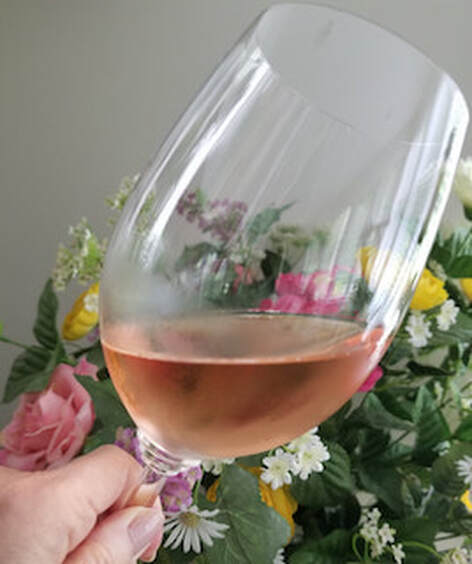
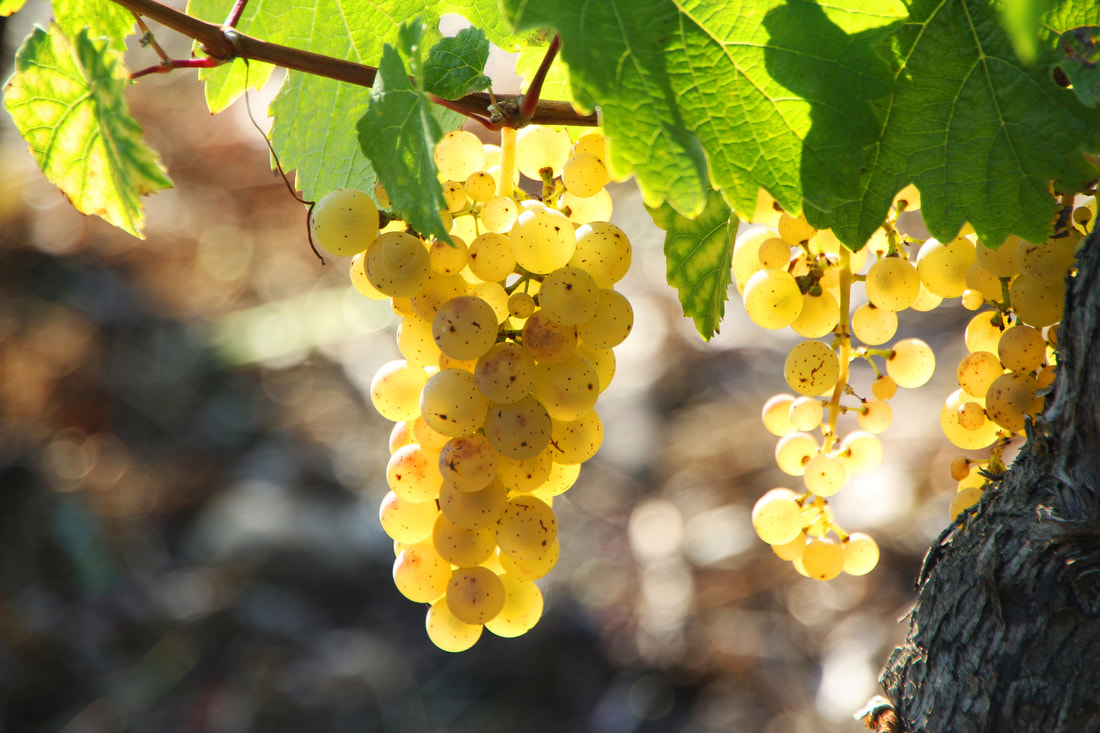
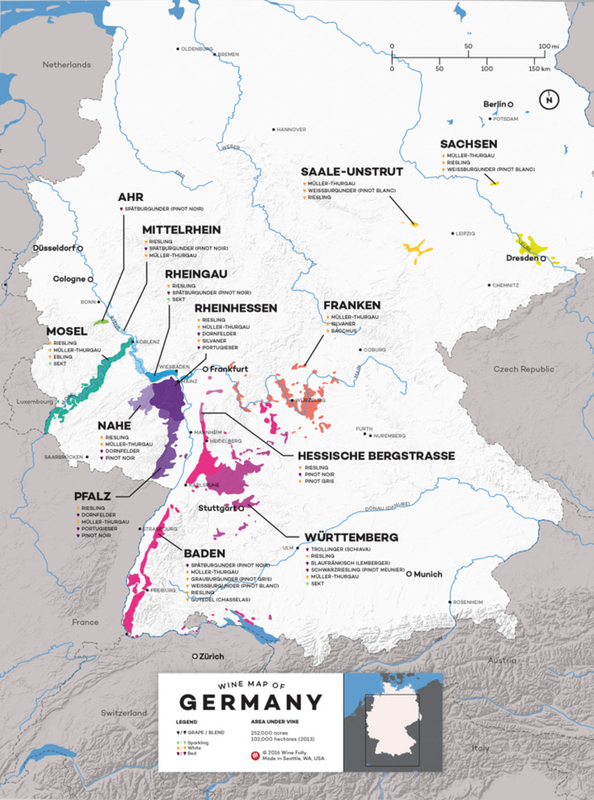
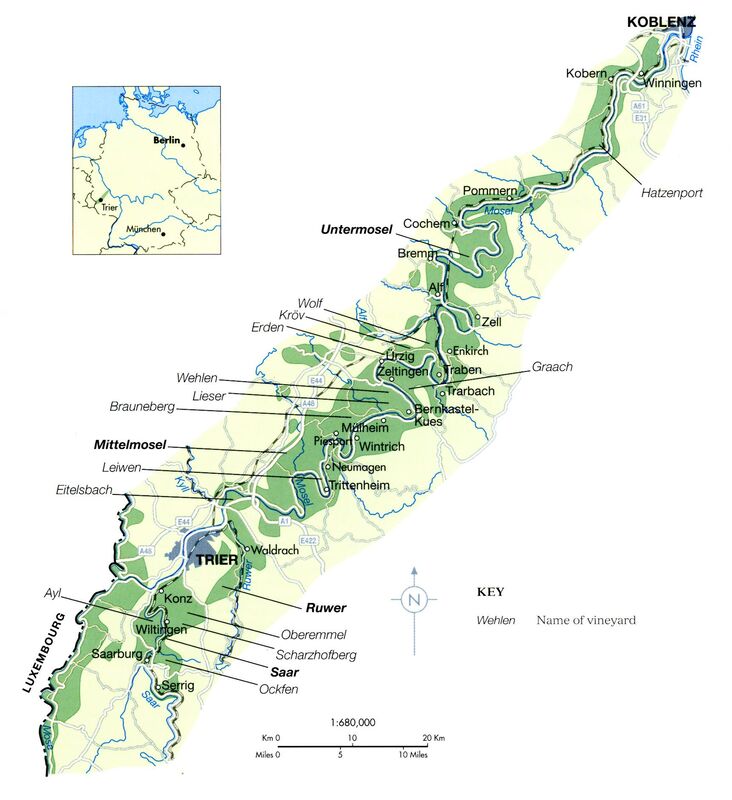
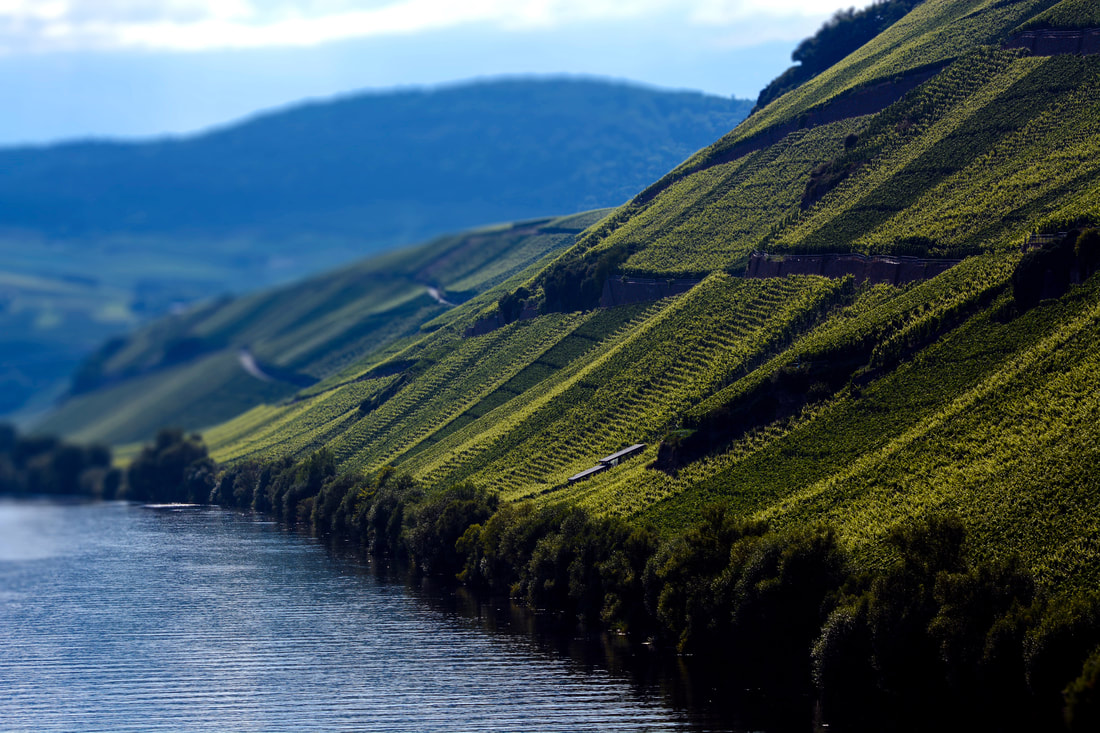
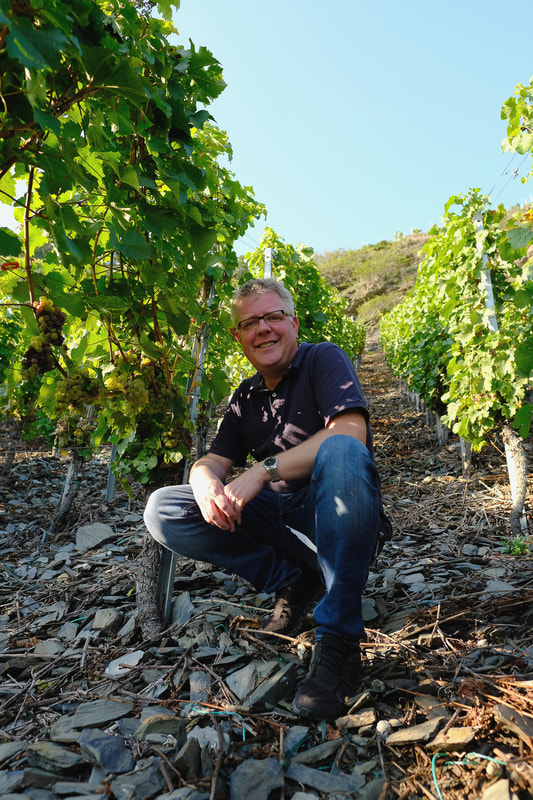
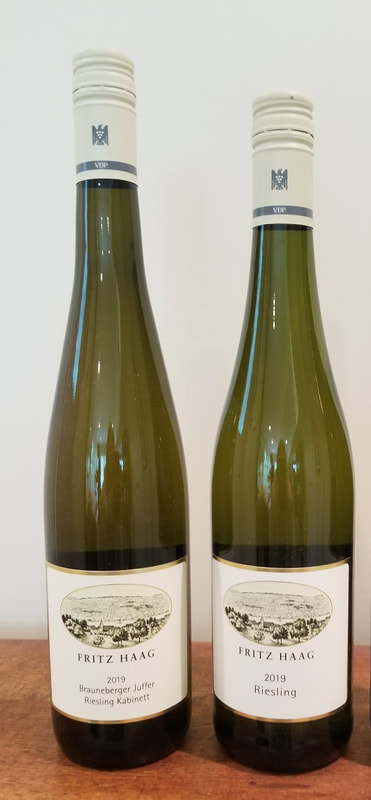

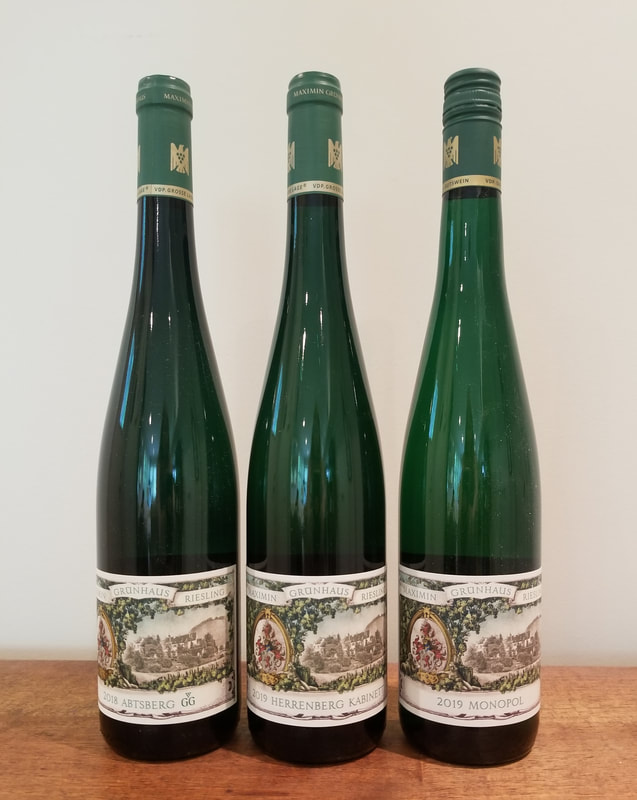
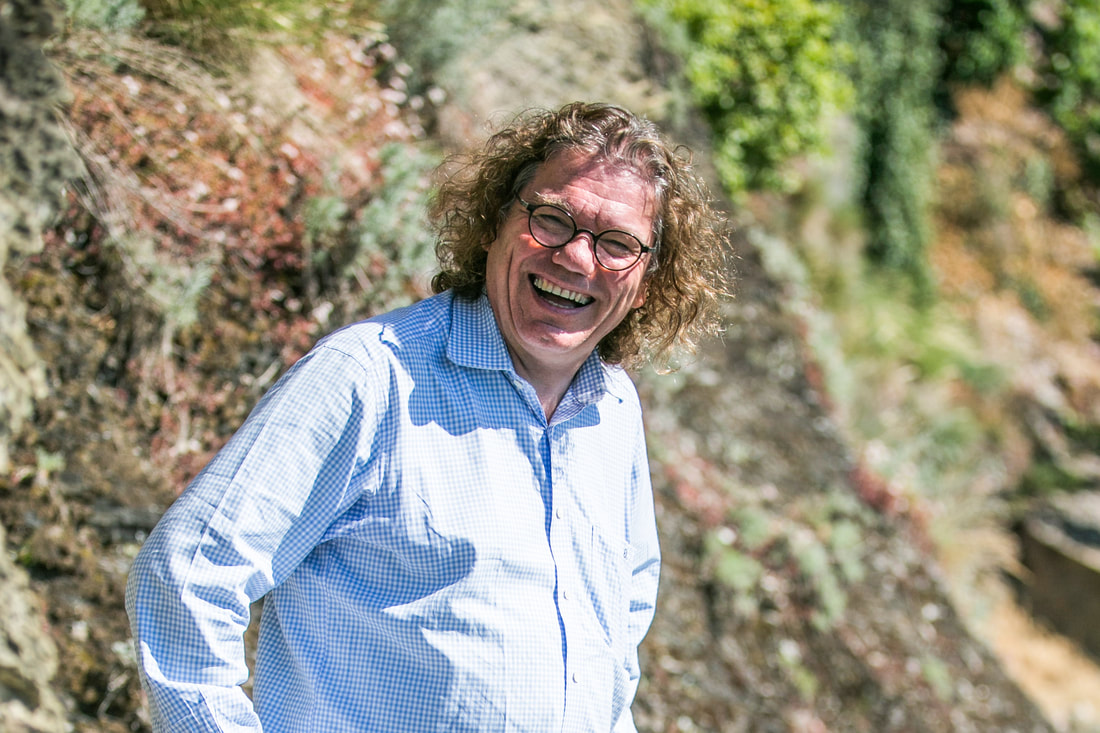
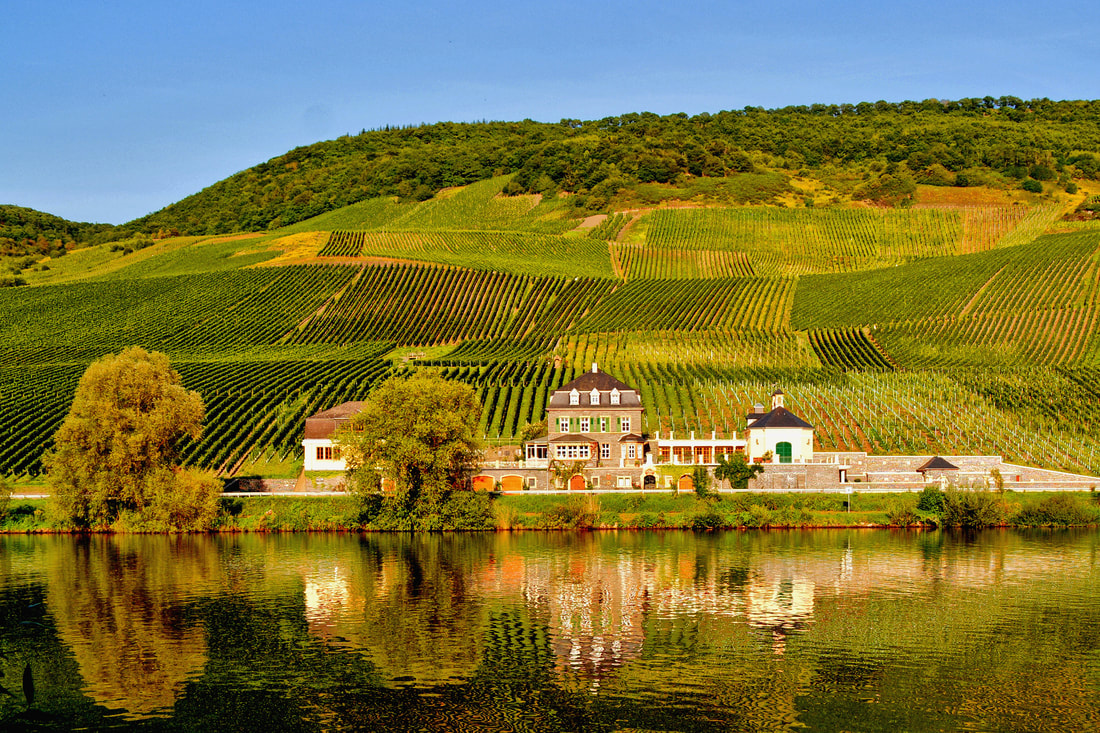
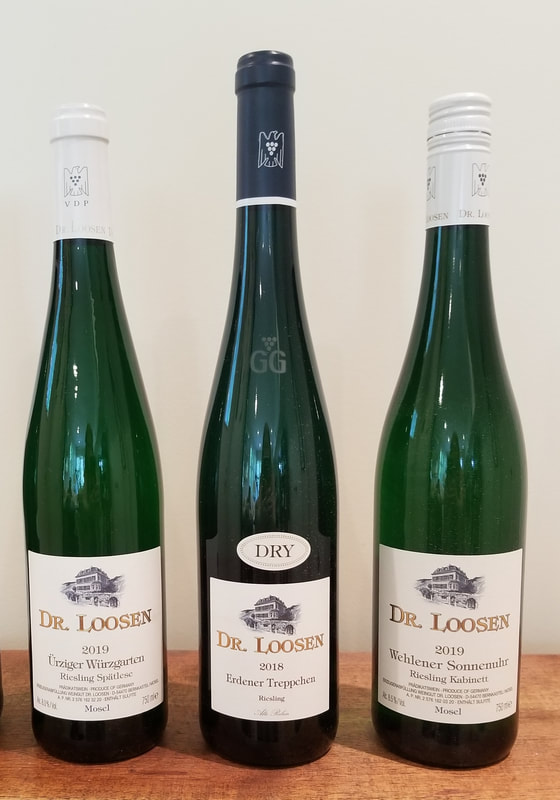
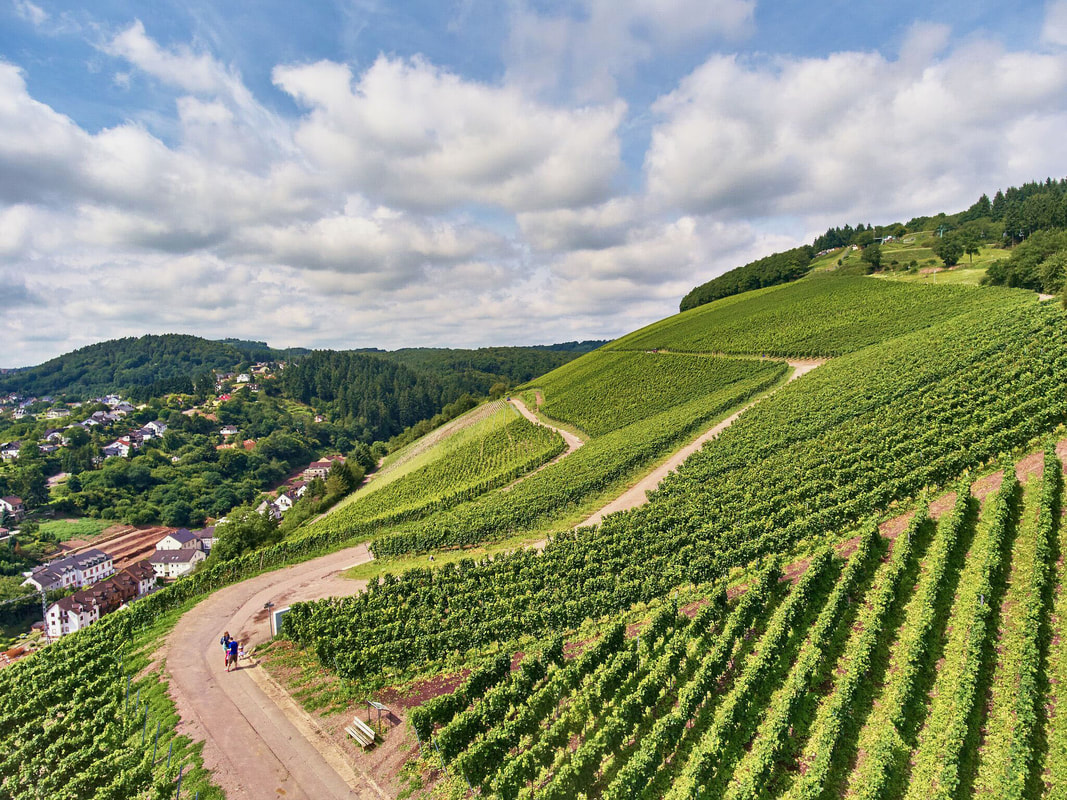
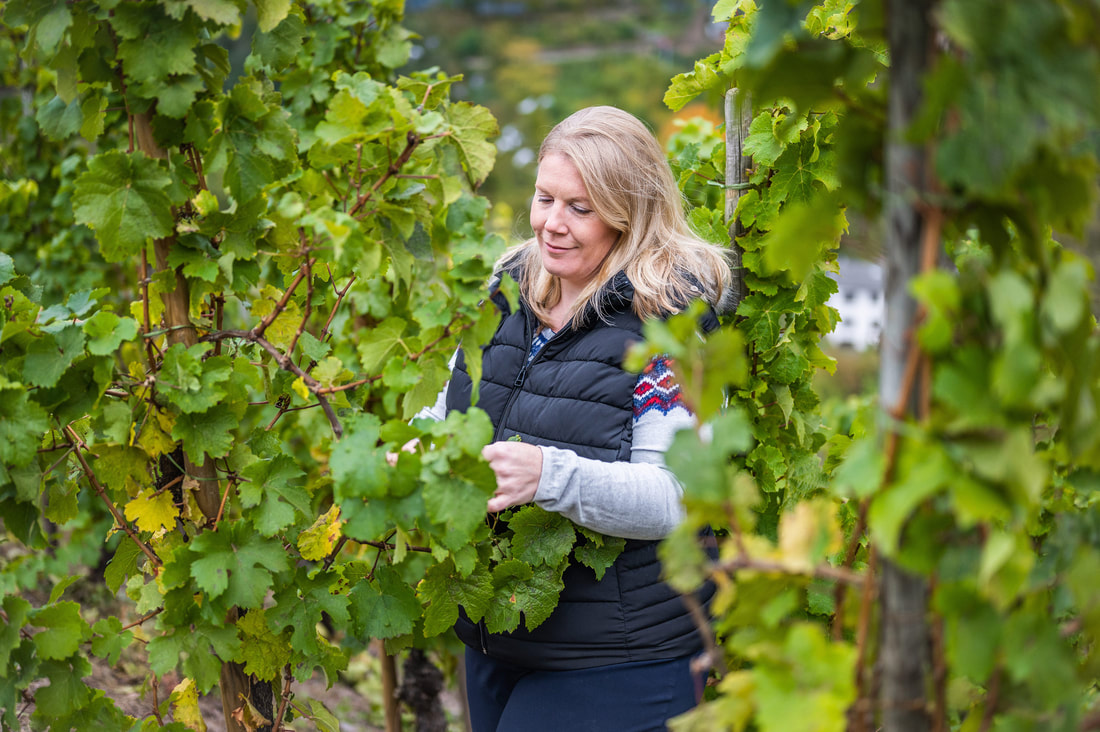
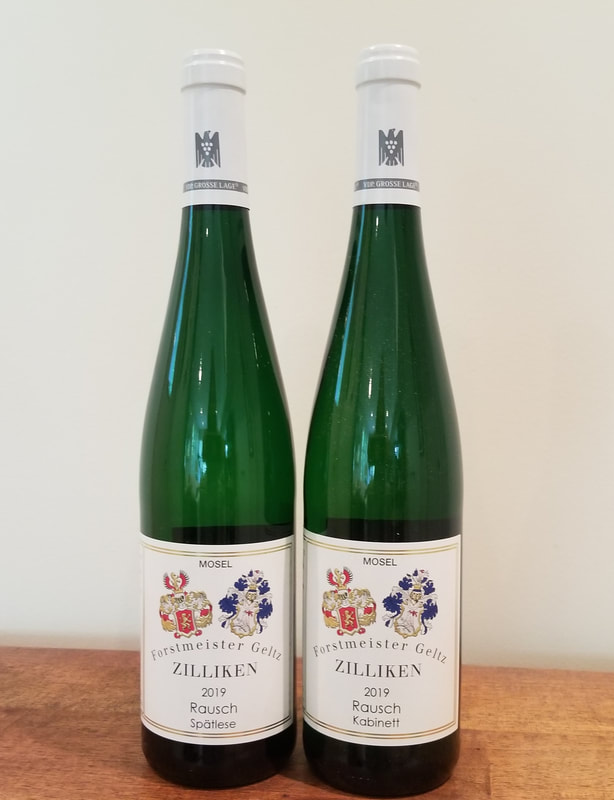

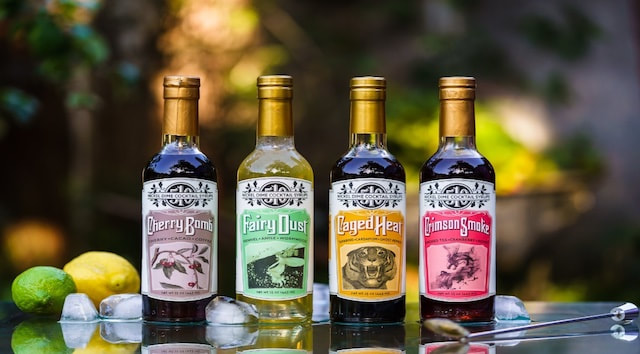
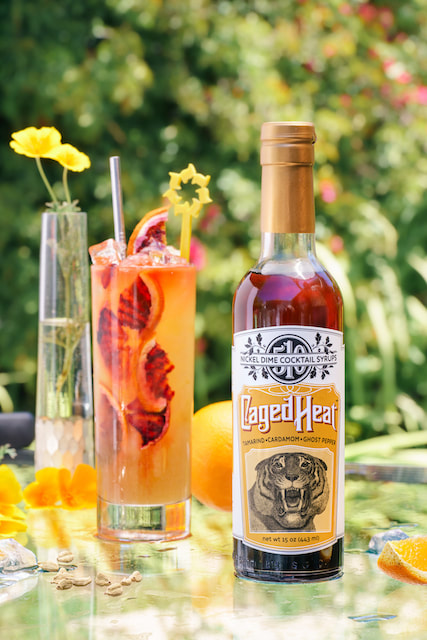
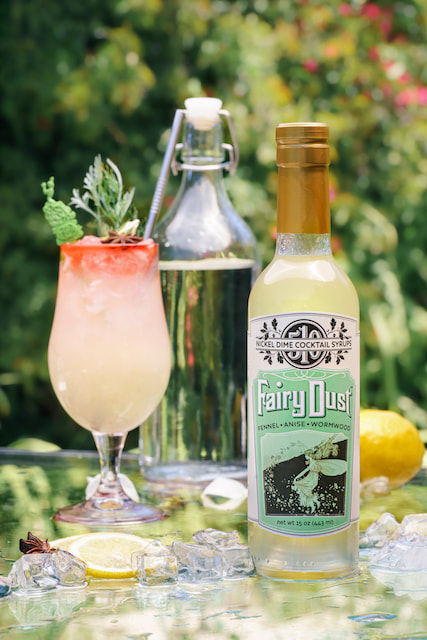
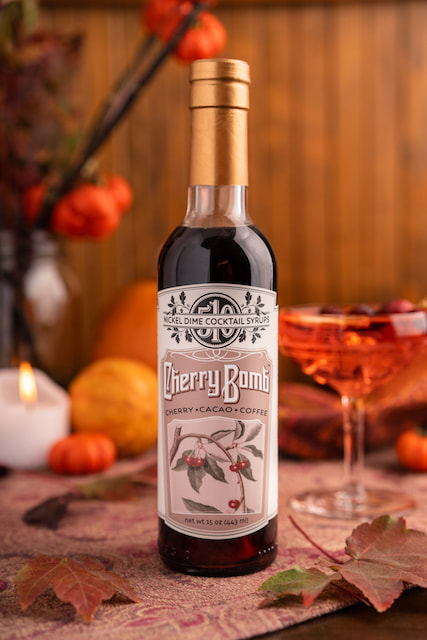
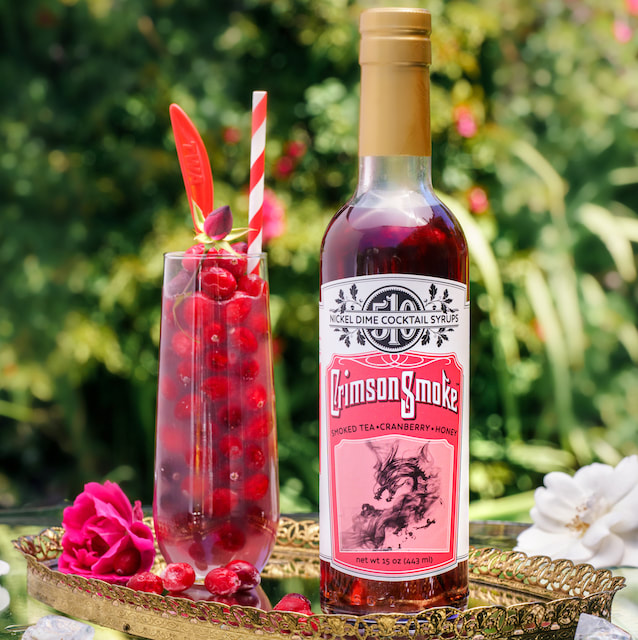
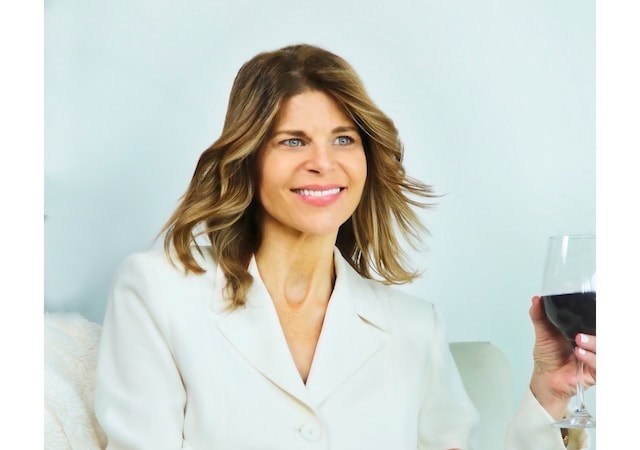
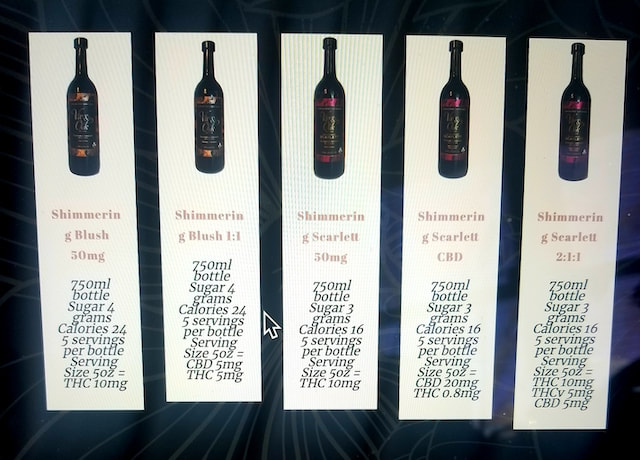
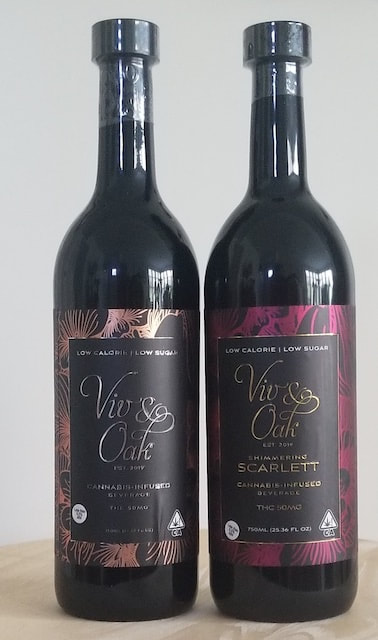
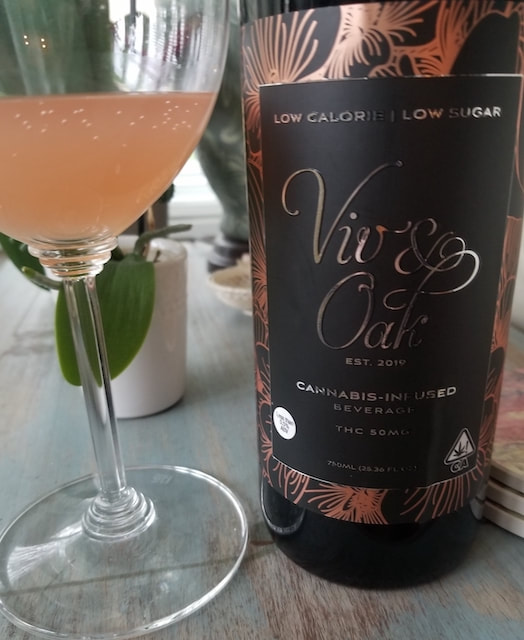
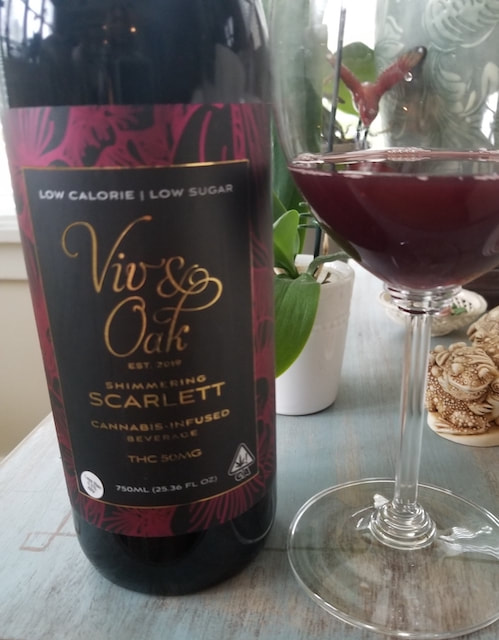

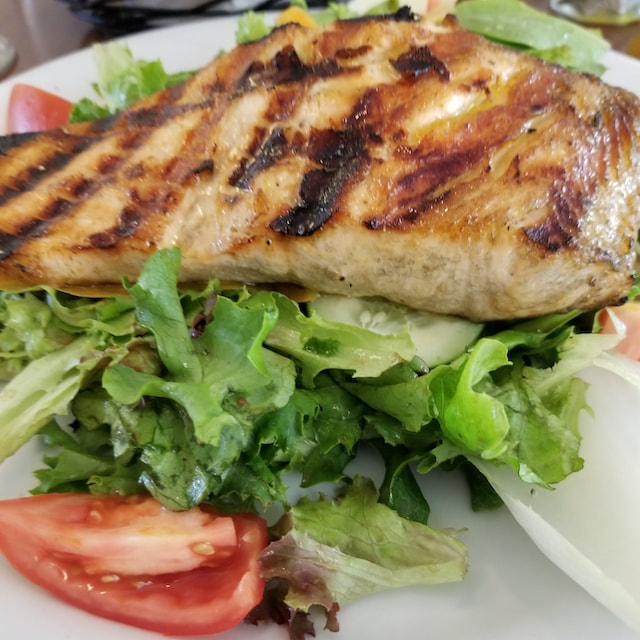
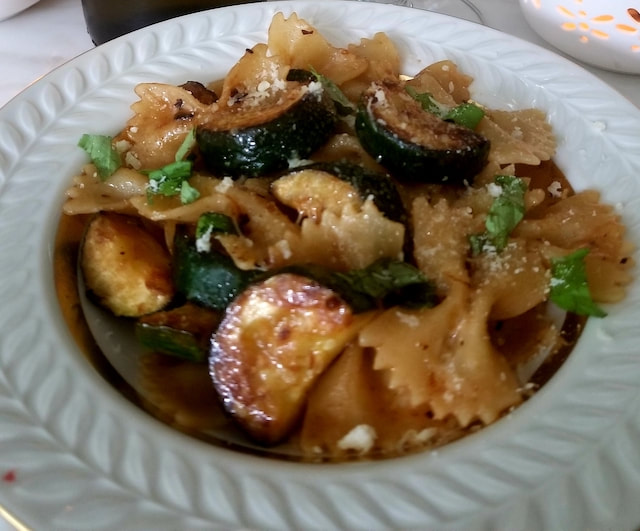
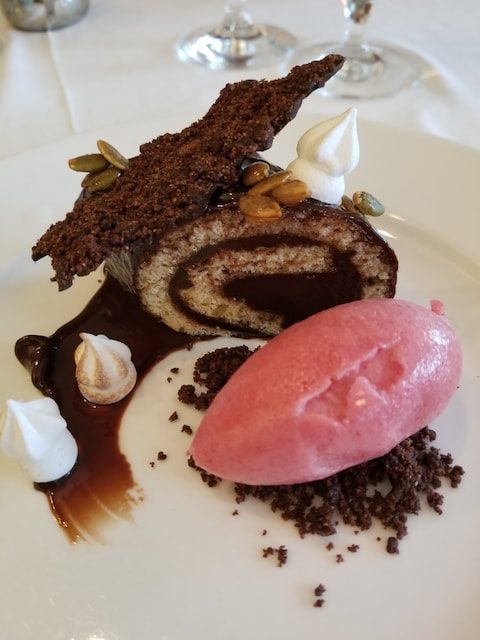
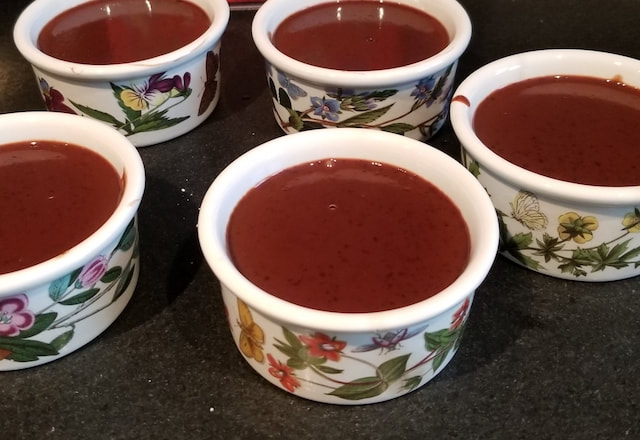
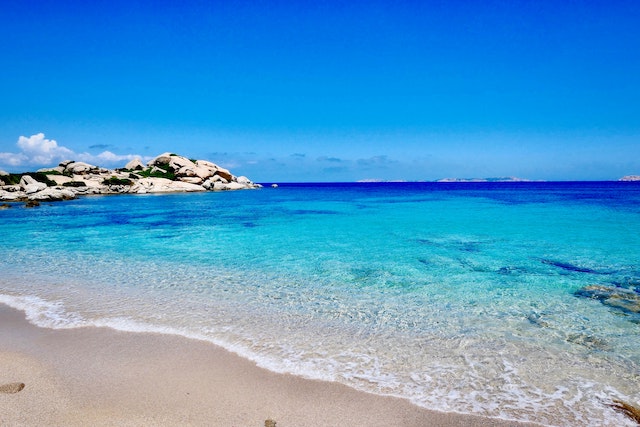
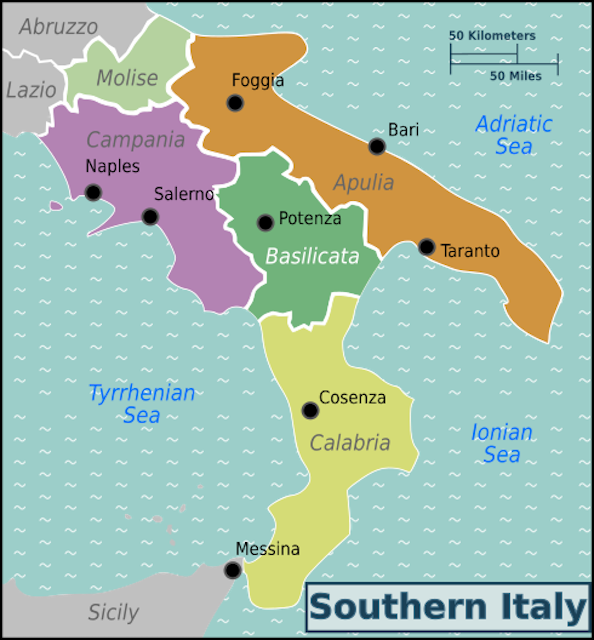
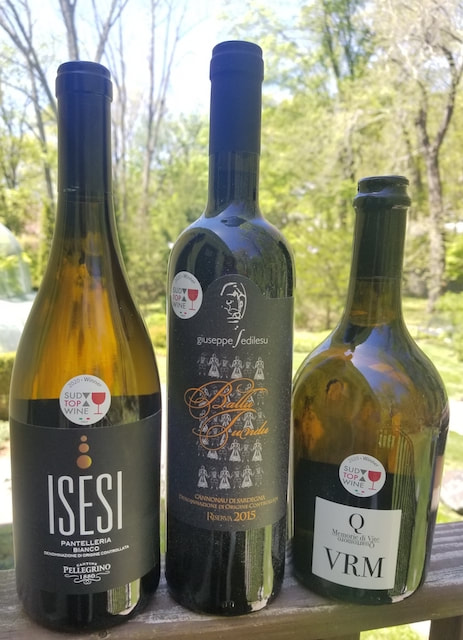
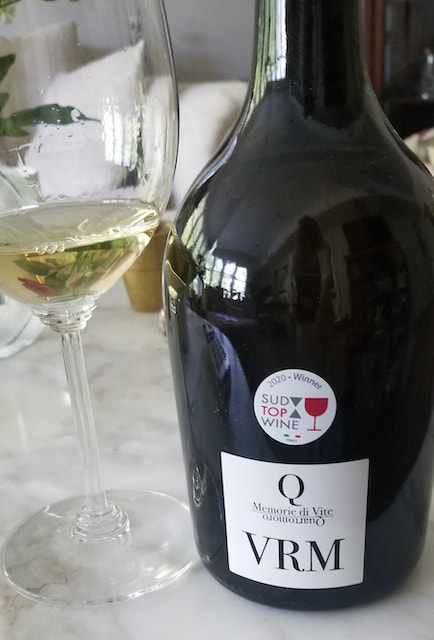
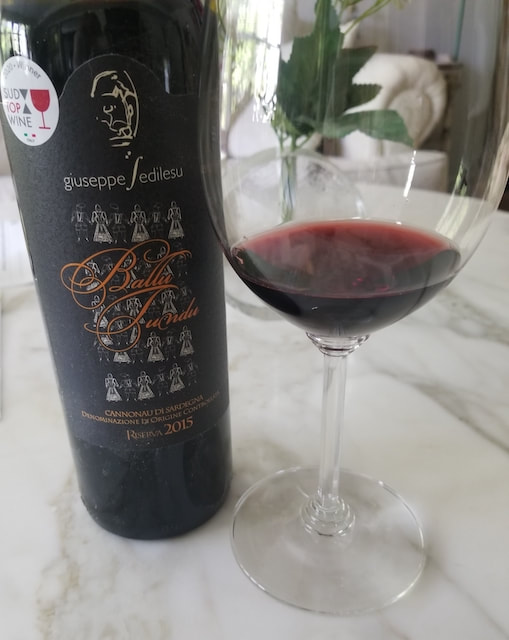
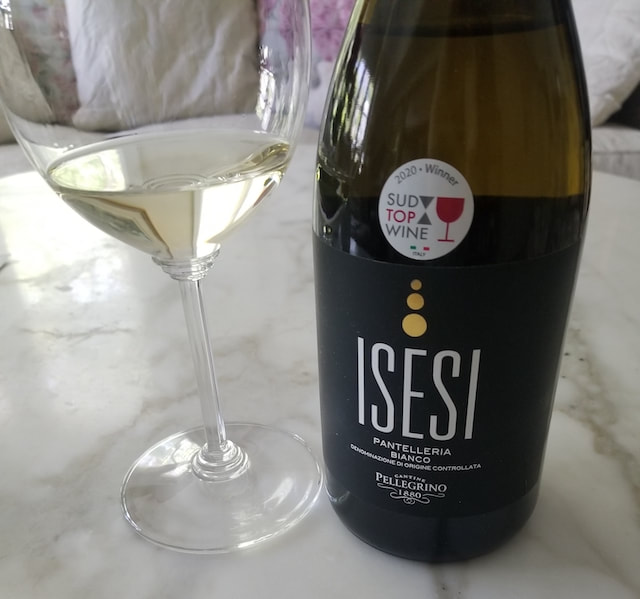
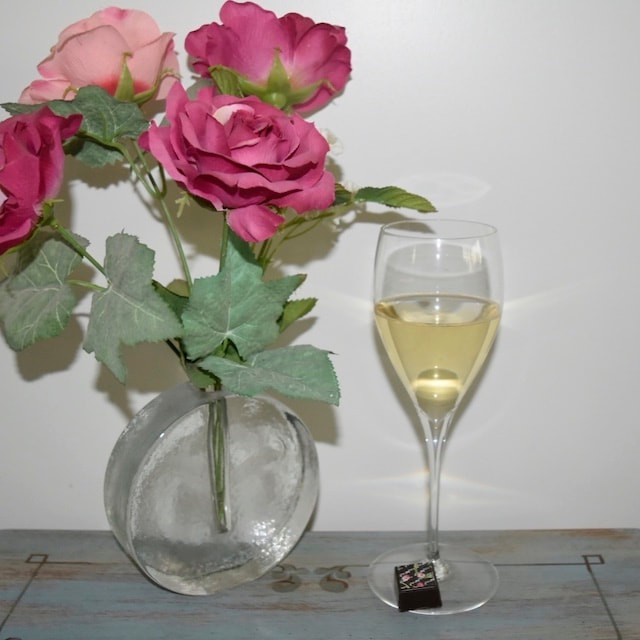
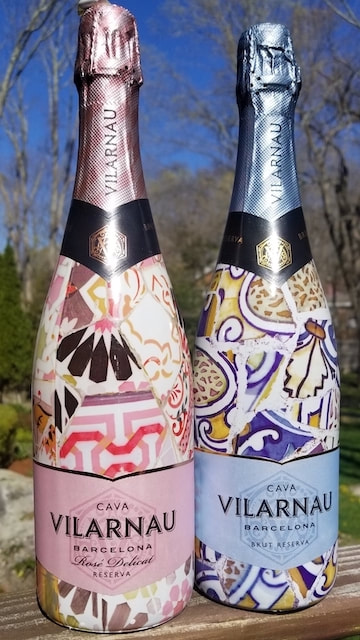
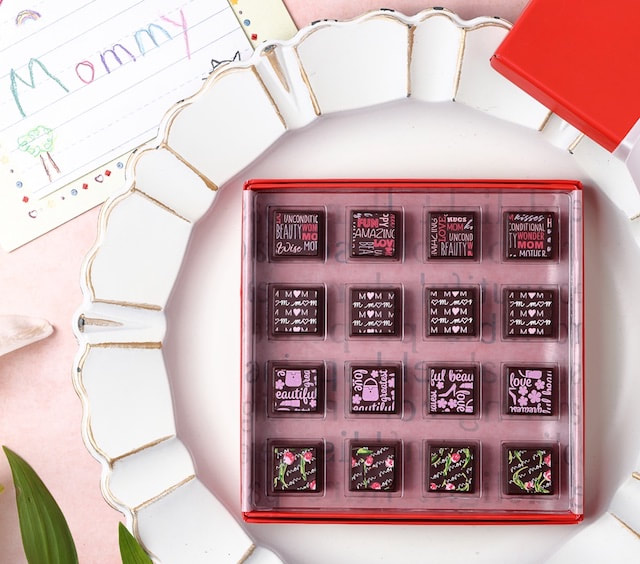
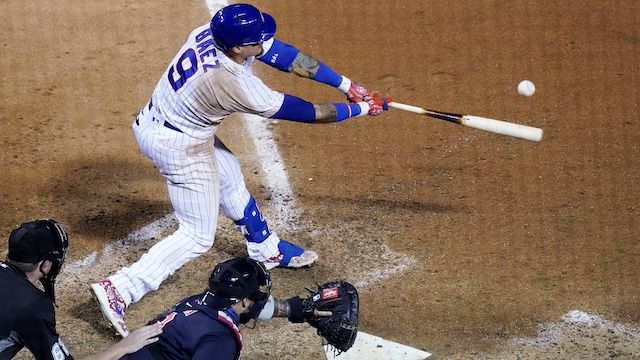
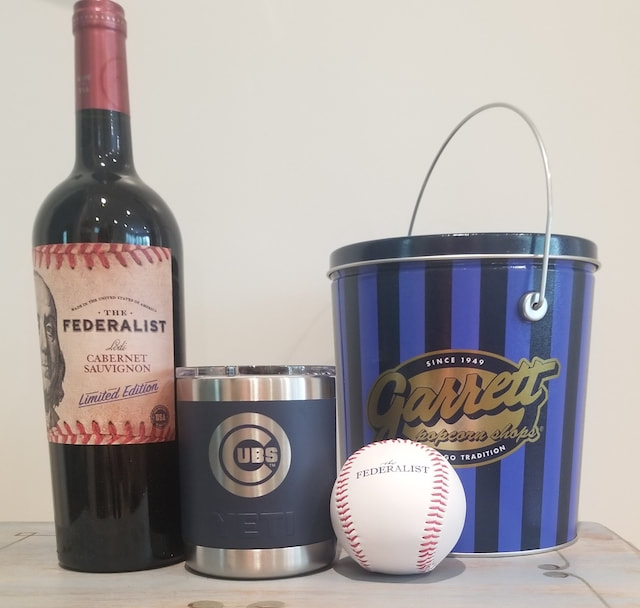

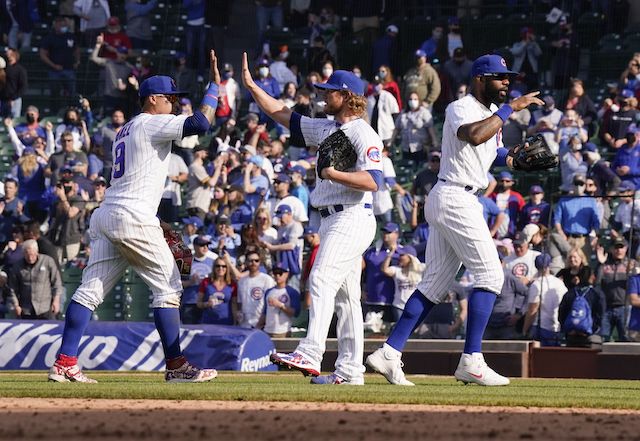
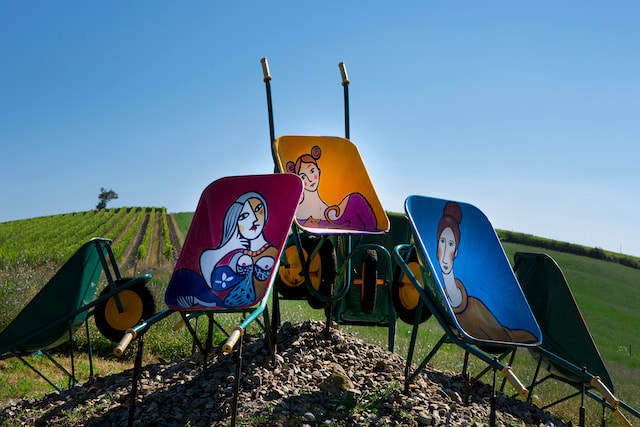

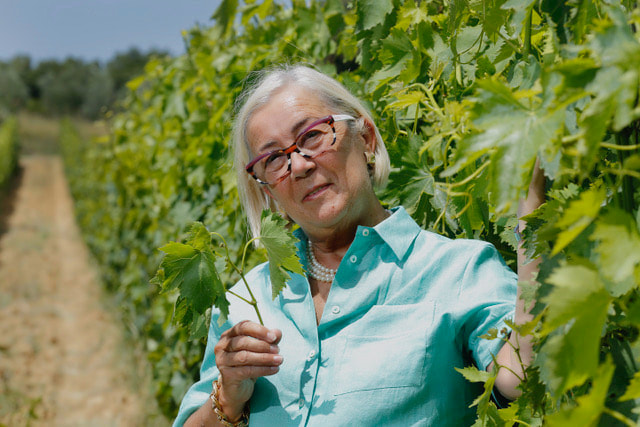
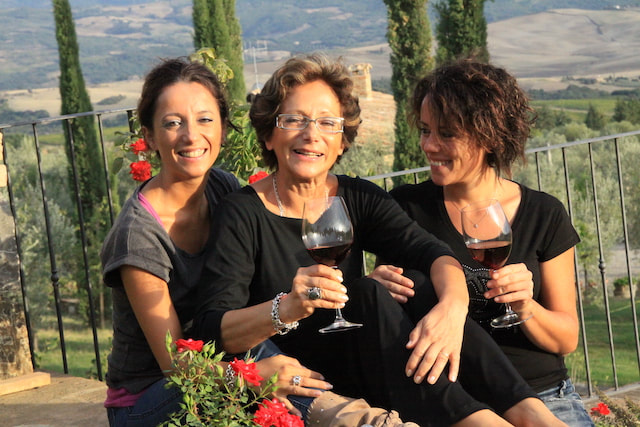
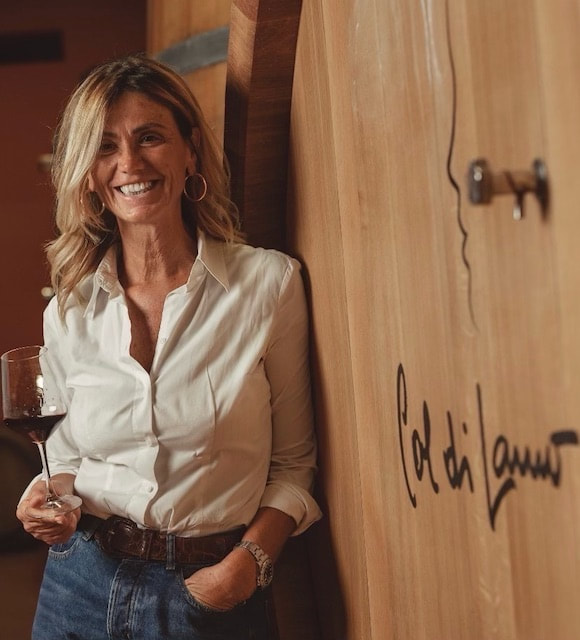
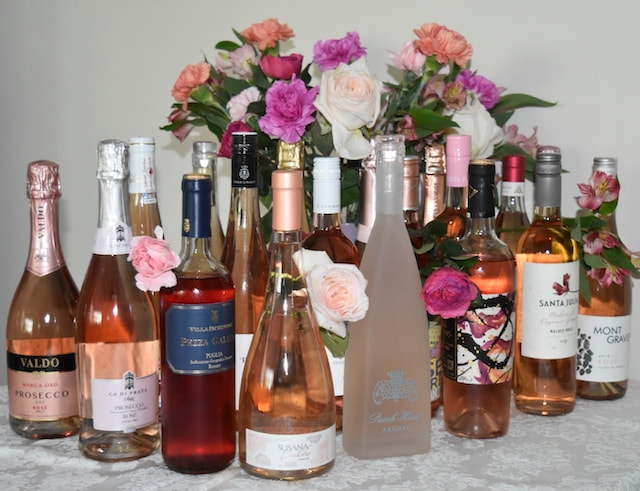
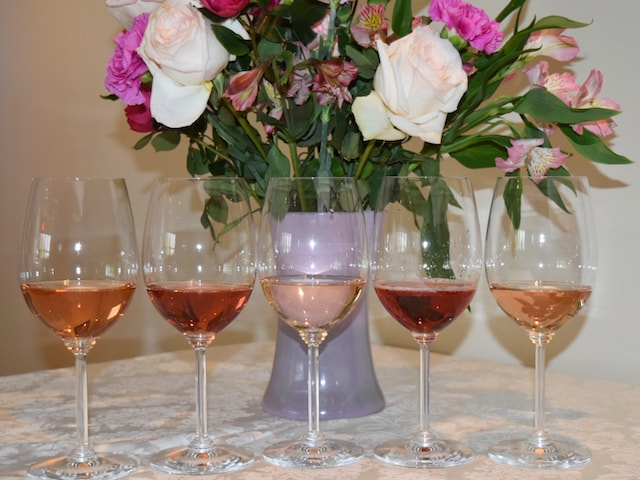
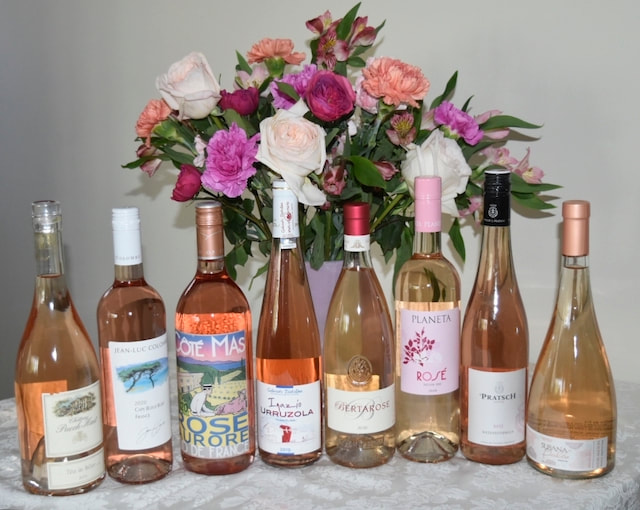
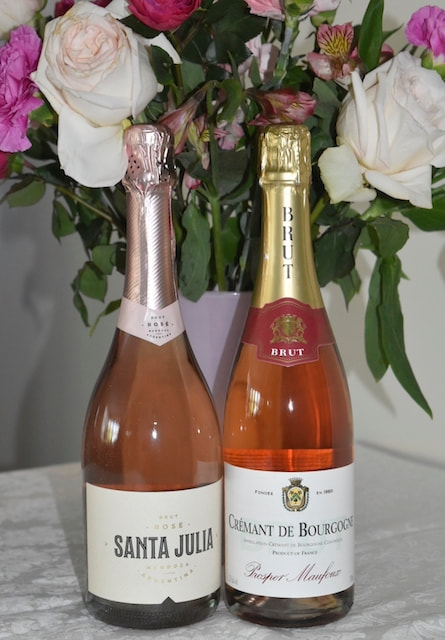
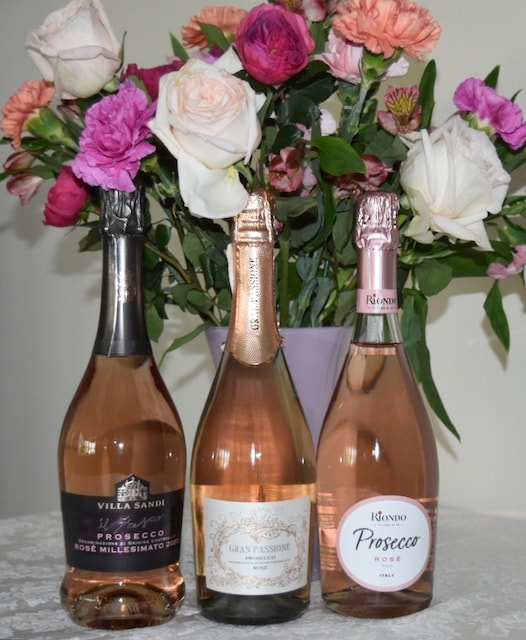
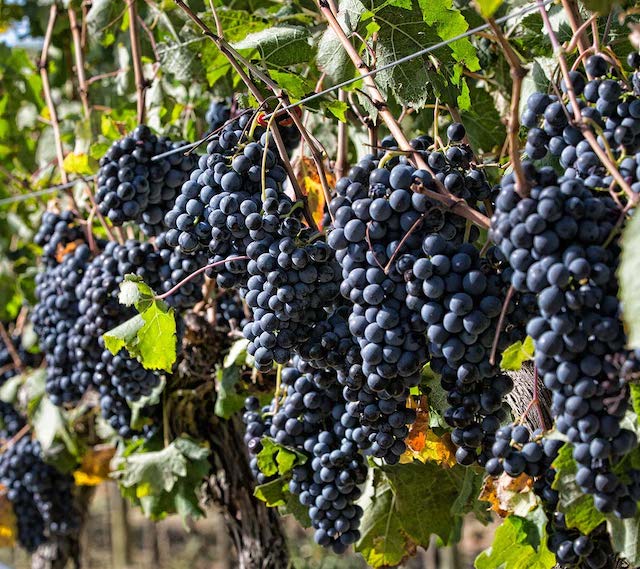
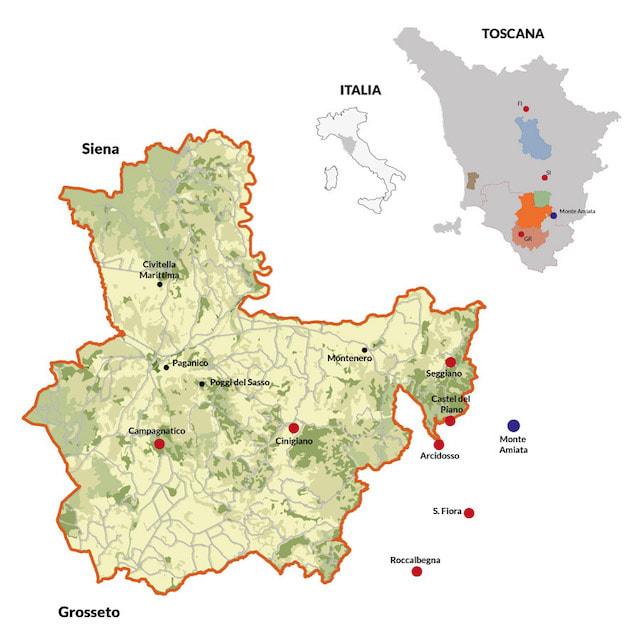
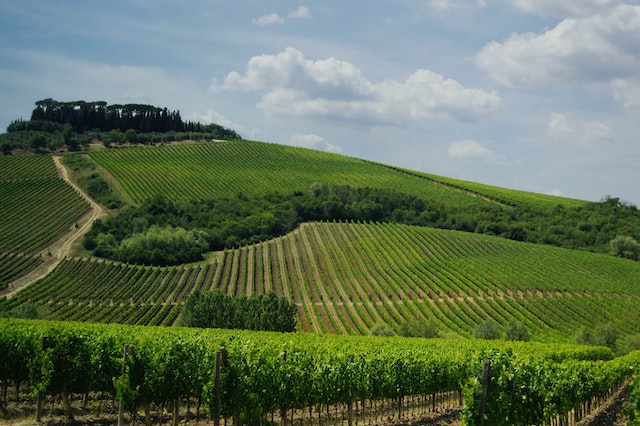
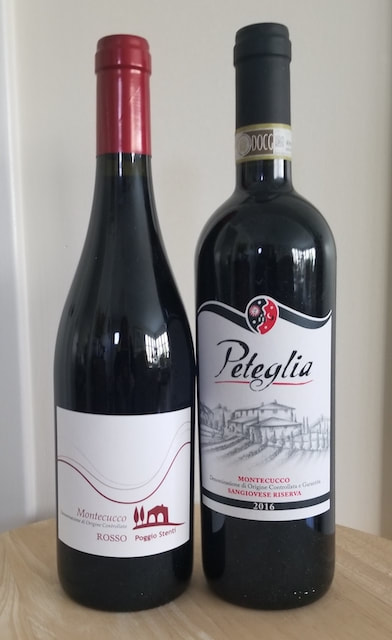
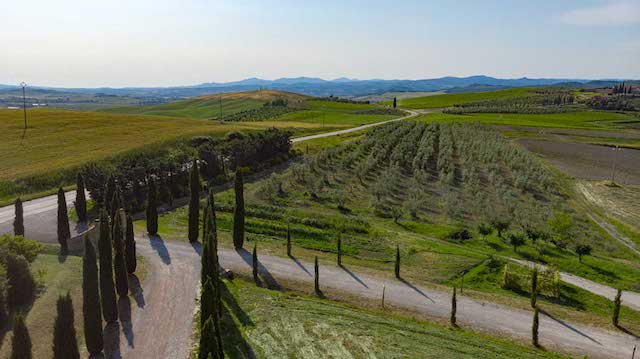

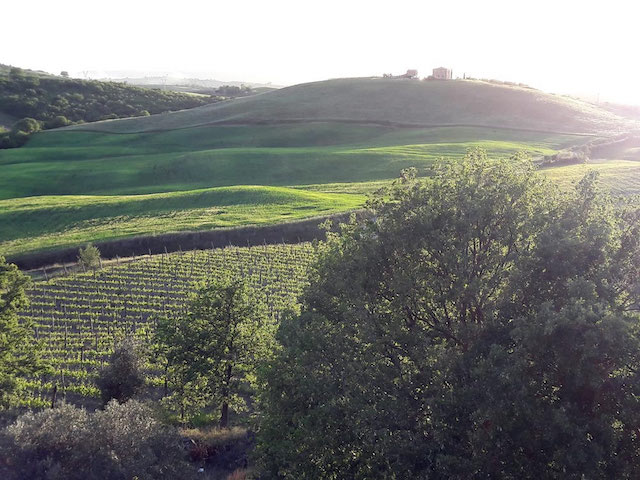
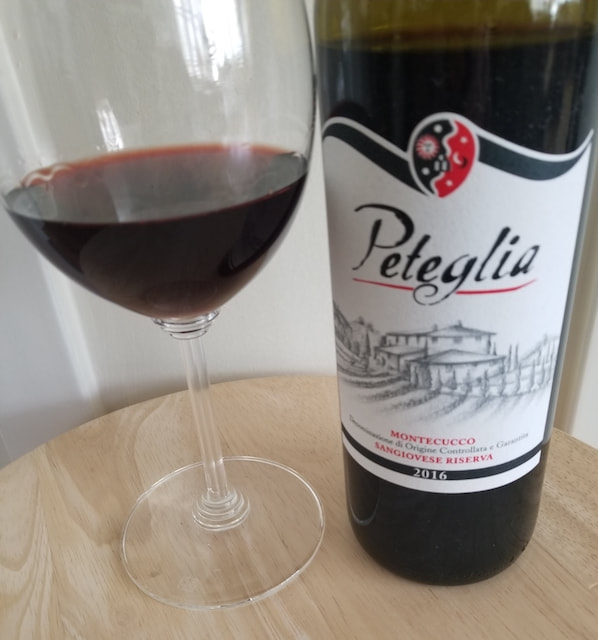
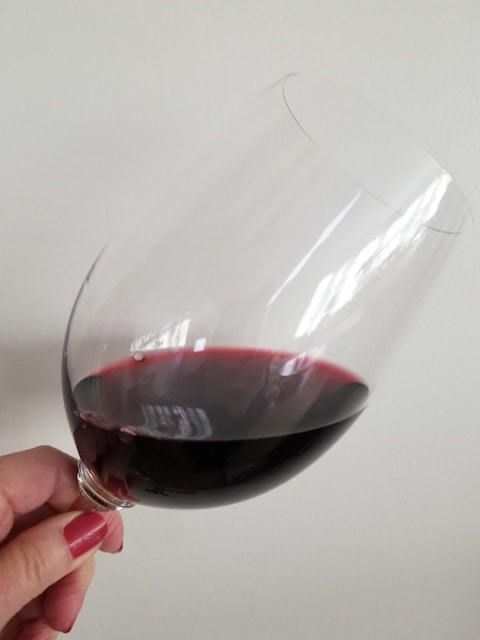
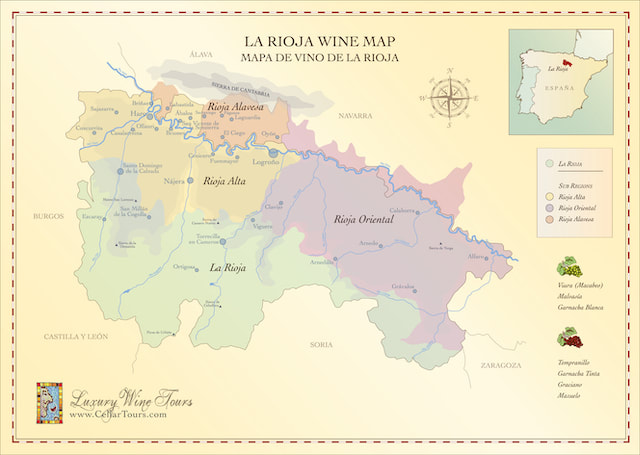
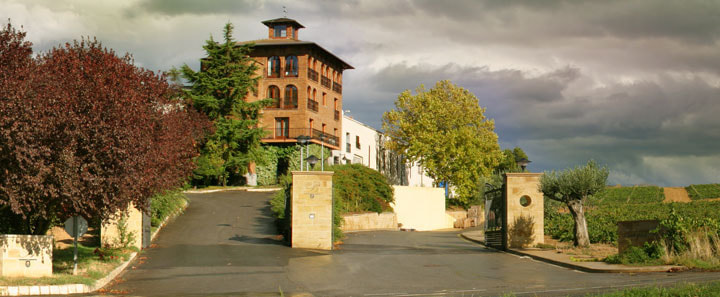
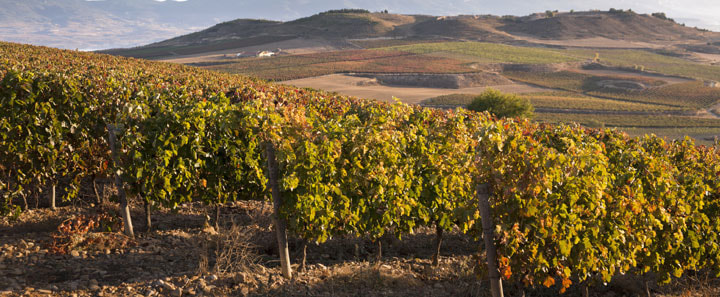
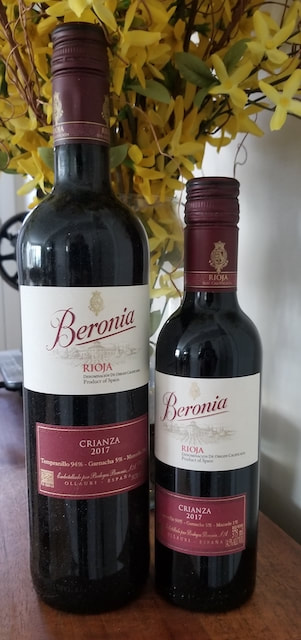

 RSS Feed
RSS Feed